
Introduction to Programming & Python _ Python Tutorial -...
13 views · Feb 10, 2024 codehunter.online
The video titled "Introduction to Programming & Python - Python Tutorial - Day #1" serves as an introductory session to programming and Python. It aims to provide beginners with a foundational understanding of programming concepts and the Python language. Throughout the video, viewers are guided through fundamental programming principles such as variables, data types, basic operations, and control structures like loops and conditionals. Additionally, the video introduces Python syntax and demonstrates how to write and execute simple Python scripts. This tutorial is ideal for individuals with little to no prior programming experience who are interested in learning Python as their first programming language.

Some Amazing Python Programs - The Power of Python _ Python ...
39 views · Feb 10, 2024 codehunter.online
The video "Some Amazing Python Programs - The Power of Python - Python Tutorial - Day #2" explores the capabilities of Python by showcasing several impressive Python programs. Viewers are introduced to a variety of practical and innovative applications of Python, ranging from data analysis and visualization to web scraping and automation. The video highlights Python's versatility and power as a programming language, demonstrating how it can be used to solve real-world problems efficiently. Additionally, viewers may learn about different libraries and frameworks commonly used in Python development. This tutorial is suitable for individuals with basic Python knowledge who are eager to discover the diverse and impactful projects that can be created using Python.

Modules and Pip _ Python Tutorial - Day #3
36 views · Feb 10, 2024 codehunter.online
The video "Modules and Pip - Python Tutorial - Day #3" provides an in-depth exploration of modules and the Python Package Index (PyPI), known as Pip. Viewers learn how to leverage Python modules to organize and reuse code effectively, enhancing the efficiency of their programming workflow. The tutorial covers the basics of importing modules, exploring built-in modules, and creating custom modules. Additionally, viewers are introduced to Pip, a powerful tool for managing Python packages, allowing them to easily install, upgrade, and uninstall external libraries and dependencies. This tutorial is essential for Python learners seeking to expand their understanding of modular programming and streamline their development process through package management.
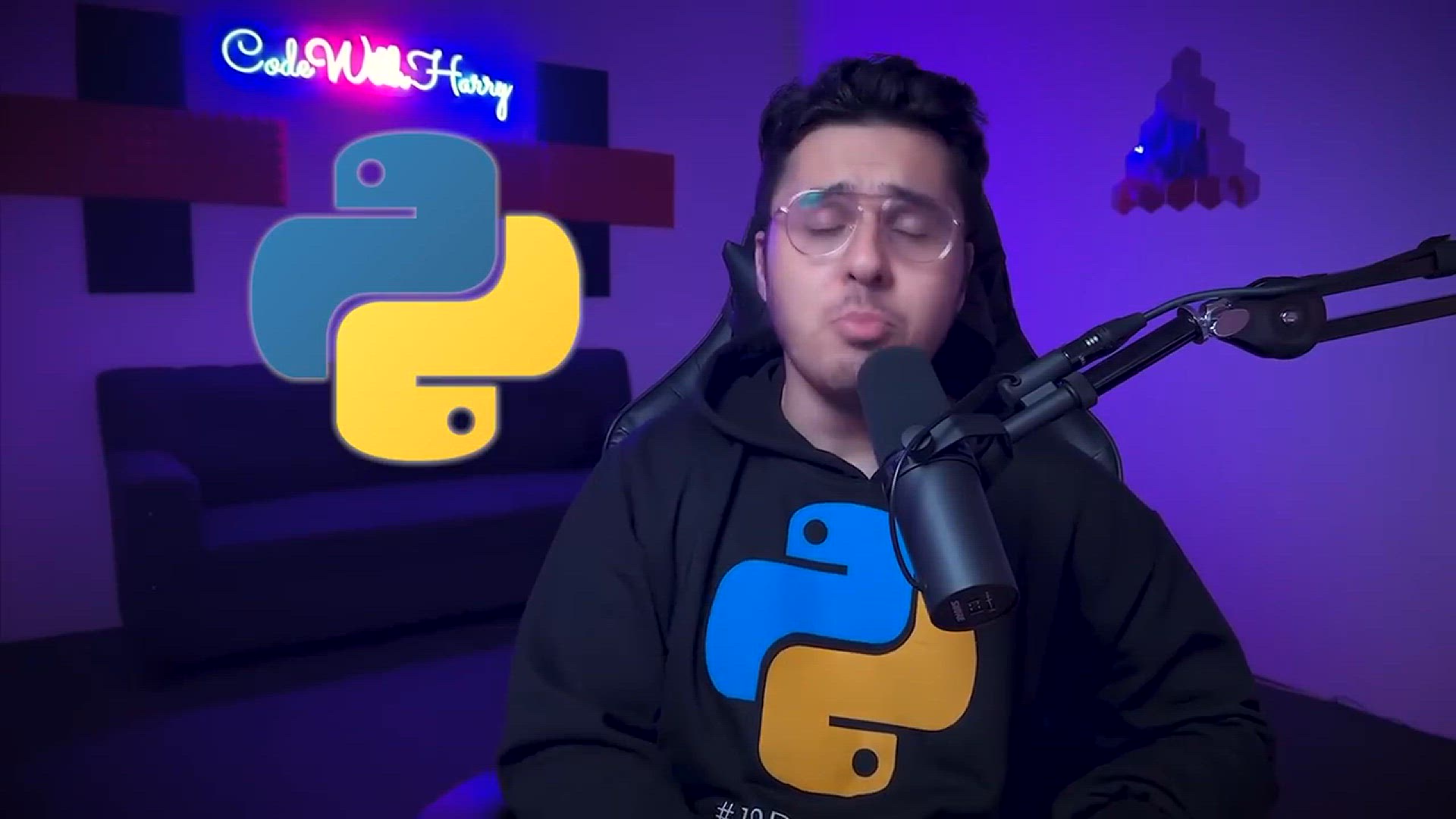
Our First Python Program _ Python Tutorial - Day #4
22 views · Feb 10, 2024 codehunter.online
The video "Our First Python Program - Python Tutorial - Day #4" marks a significant milestone for beginners embarking on their Python journey. In this tutorial, viewers are guided through the process of writing and executing their first Python program. The tutorial covers essential concepts such as setting up a development environment, writing Python code using a text editor or an integrated development environment (IDE), and running the program from the command line or within the IDE. Additionally, viewers learn about the structure of a Python script, including defining variables, writing basic statements, and using print statements to display output. This foundational tutorial sets the stage for further exploration into the world of Python programming, providing beginners with the confidence and skills to start building their own Python projects.

Comments, Escape Sequences & Print Statement _ Python Tu...
74 views · Feb 10, 2024 codehunter.online
In the video "Comments, Escape Sequences & Print Statement - Python Tutorial - Day #5", viewers are introduced to essential elements of Python syntax and formatting. The tutorial covers the use of comments to annotate code for clarity and documentation. It also explains escape sequences, which are special characters used to represent non-printable characters or to format strings. Furthermore, the video explores the print statement in Python, demonstrating how it is used to display output to the console. By mastering these fundamental concepts, viewers gain a solid understanding of how to write clear, concise, and well-formatted Python code. This tutorial is crucial for beginners looking to improve their code readability and comprehension as they progress in their Python programming journey.

Variables and Data Types _ Python Tutorial - Day #6
57 views · Feb 10, 2024 codehunter.online
In the video "Variables and Data Types - Python Tutorial - Day #6", viewers delve into the foundational concepts of variables and data types in Python programming. The tutorial explains how variables are used to store and manipulate data, introducing the concept of variable assignment and naming conventions. Additionally, viewers learn about different data types in Python, such as integers, floats, strings, lists, tuples, and dictionaries, along with examples of how to declare and manipulate variables of each type. By understanding variables and data types, viewers gain the necessary knowledge to efficiently manage and manipulate data within their Python programs. This tutorial serves as a crucial building block for beginners to further their understanding of Python programming.

Exercise 1_ Calculator using Python _ Python Tutorial - Day ...
441 views · Feb 10, 2024 codehunter.online
In the video "Exercise 1: Calculator using Python - Python Tutorial - Day #7", viewers are presented with a practical coding exercise aimed at applying the concepts learned in previous tutorials. The tutorial guides viewers through the process of creating a basic calculator program using Python. Viewers learn how to define functions for various arithmetic operations such as addition, subtraction, multiplication, and division. Additionally, they gain insight into handling user input, performing error checking, and displaying results. This exercise not only reinforces fundamental programming concepts but also provides viewers with hands-on experience in building a functional Python program. It serves as an important step in developing problem-solving skills and confidence in Python programming for beginners.

Exercise 1_ Calculator using Python (Solution) _ Python Tuto...
0 views · Feb 10, 2024 codehunter.online
In the video "Exercise 1: Calculator using Python (Solution) - Python Tutorial - Day #8", viewers are provided with the solution to the coding exercise introduced in the previous tutorial. The tutorial walks viewers through a step-by-step explanation of the completed calculator program in Python. Viewers can compare their own solutions to the provided solution, gaining insights into different approaches and coding techniques. Additionally, the tutorial may offer further explanations and optimizations to enhance the understanding of Python programming concepts demonstrated in the exercise. This video helps reinforce the learning from the exercise while providing additional guidance and clarity for beginners in Python programming.
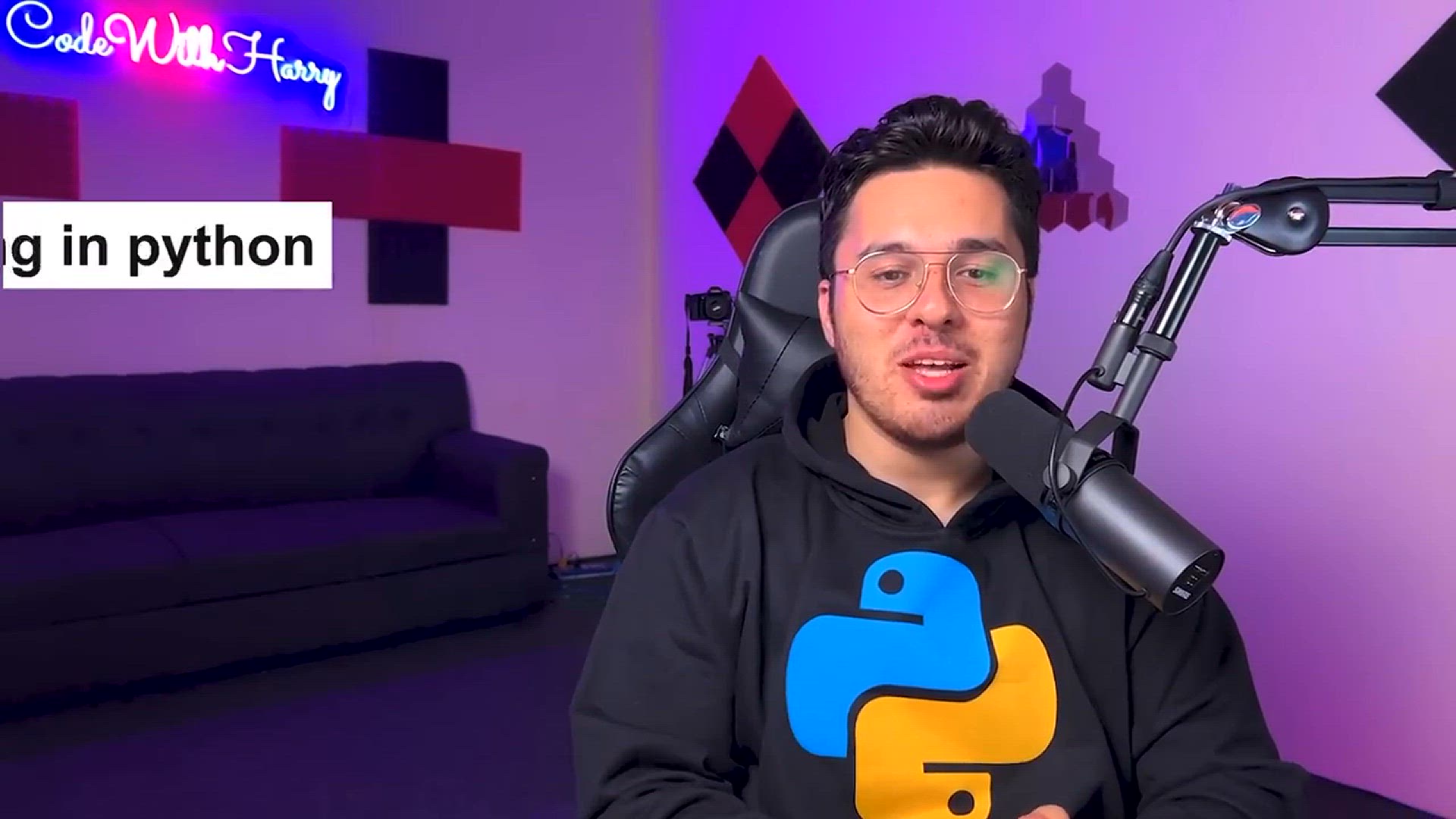
Typecasting in Python _ Python Tutorial - Day #9
83 views · Feb 10, 2024 codehunter.online
In the video "Typecasting in Python - Python Tutorial - Day #9", viewers are introduced to the concept of typecasting within the Python programming language. Typecasting, also known as type conversion, involves converting one data type into another. The tutorial covers various methods of typecasting in Python, including explicit and implicit conversions. Viewers learn how to convert between different data types such as integers, floats, strings, and boolean values, and how to handle potential errors that may arise during typecasting operations. By understanding typecasting, viewers gain valuable skills for manipulating and managing data effectively within their Python programs. This tutorial is essential for beginners looking to expand their knowledge of Python data types and conversions.

Taking User Input in Python _ Python Tutorial - Day #10
3 views · Feb 10, 2024 codehunter.online
In the video "Taking User Input in Python - Python Tutorial - Day #10", viewers learn how to interactively take input from users within Python programs. The tutorial covers the input() function, which allows users to enter data during program execution. Viewers are guided through examples demonstrating how to prompt users for input, retrieve and store user-entered values in variables, and perform operations based on user input. Additionally, the tutorial discusses best practices for handling user input, including data validation and error handling. By mastering the input() function, viewers can create more dynamic and interactive Python programs that respond to user interactions. This tutorial is crucial for beginners seeking to enhance their programming skills and create more engaging applications in Python.

Strings in Python _ Python Tutorial - Day #11
4K views · Feb 10, 2024 codehunter.online
In the video "Strings in Python - Python Tutorial - Day #11", viewers dive into the versatile world of strings within the Python programming language. The tutorial explores the fundamentals of string manipulation, covering topics such as string declaration, concatenation, indexing, slicing, and various built-in string methods. Viewers learn how to manipulate strings efficiently, perform common tasks like searching and replacing substrings, and format strings using f-strings and other formatting techniques. Additionally, the tutorial delves into advanced string operations such as string formatting and regular expressions. By understanding the intricacies of strings in Python, viewers gain essential skills for working with textual data and building robust applications. This tutorial is invaluable for beginners aiming to become proficient in Python programming.

Strings Slicing and Operations on Strings in Python _ Python...
4 views · Feb 10, 2024 codehunter.online
In the video "String Slicing and Operations on Strings in Python - Python Tutorial - Day #12", viewers delve deeper into the manipulation and operations of strings within Python. The tutorial focuses on string slicing, a powerful technique for extracting substrings from larger strings based on specified indices or ranges. Viewers learn how to slice strings using square brackets notation and comprehend the nuances of indexing and slicing in Python, including negative indexing and step values. Additionally, the tutorial covers various string operations, including concatenation, repetition, and finding the length of strings. By mastering string slicing and operations, viewers gain a comprehensive understanding of how to effectively manipulate textual data within Python programs. This tutorial serves as a crucial stepping stone for beginners aiming to build proficiency in Python programming.

String Methods in Python _ Python Tutorial - Day #13
20 views · Feb 10, 2024 codehunter.online
In the video "String Methods in Python - Python Tutorial - Day #13", viewers are introduced to the plethora of built-in string methods available in Python. The tutorial covers a wide range of string manipulation techniques, including methods for modifying case (upper, lower), removing whitespace, searching for substrings, replacing text, and splitting strings into lists. Viewers learn how to leverage these methods effectively to perform common string operations and manipulate text data with ease. Additionally, the tutorial demonstrates examples of each string method in action, providing practical insights into their usage. By understanding and mastering these string methods, viewers enhance their ability to handle and process textual data within Python programs efficiently. This tutorial is essential for beginners seeking to expand their knowledge of Python's string manipulation capabilities.

If Else Conditional Statements in Python _ Python Tutorial -...
19 views · Feb 10, 2024 codehunter.online
In the video "If Else Conditional Statements in Python - Python Tutorial - Day #14", viewers are introduced to the concept of conditional statements in Python, particularly the "if-else" statements. These statements allow programmers to control the flow of their programs based on certain conditions. The tutorial covers the syntax of "if-else" statements, including the use of comparison operators to evaluate conditions. Viewers learn how to use "if" statements to execute code blocks when a condition is true, and "else" statements to provide an alternative code block to execute when the condition is false. Additionally, the tutorial explores the use of "elif" statements for handling multiple conditions in a more structured manner. By mastering conditional statements, viewers gain the ability to create more dynamic and responsive Python programs that adapt to different scenarios. This tutorial is essential for beginners looking to enhance their understanding of control flow in Python programming.
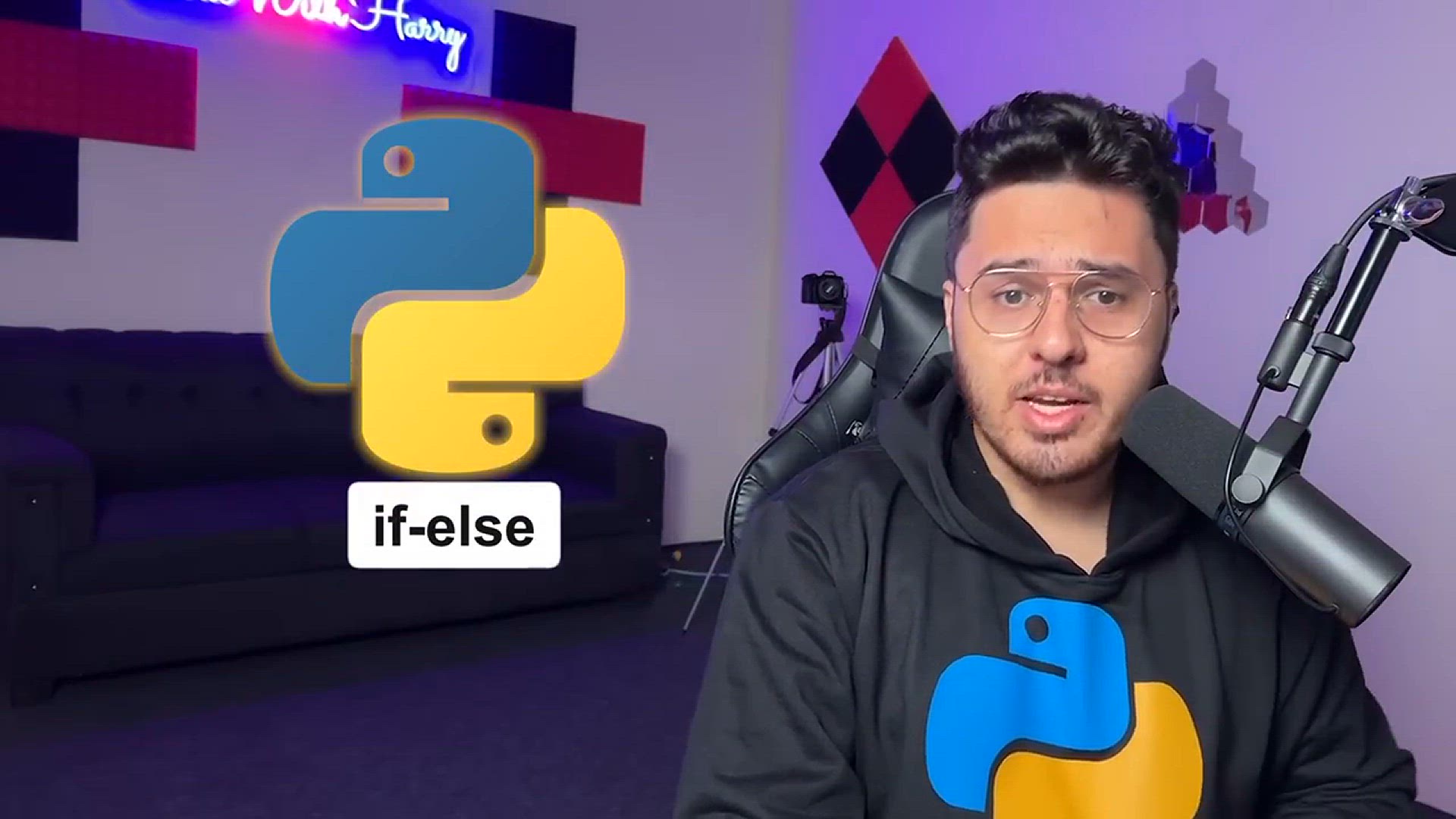
Exercise 2_ Good Morning Sir _ Python Tutorial - Day #15
24 views · Feb 10, 2024 codehunter.online
In the video "Exercise 2: Good Morning Sir - Python Tutorial - Day #15", viewers are presented with a coding exercise aimed at applying the concepts of conditional statements and string manipulation learned in previous tutorials. The exercise involves creating a Python program that greets the user based on the time of day. Viewers are tasked with writing a script that dynamically generates a greeting message such as "Good Morning", "Good Afternoon", or "Good Evening" depending on the current time. By completing this exercise, viewers reinforce their understanding of conditional statements and string manipulation in Python while gaining practical experience in building responsive and interactive programs. This tutorial is valuable for beginners seeking to strengthen their programming skills and tackle real-world coding challenges.
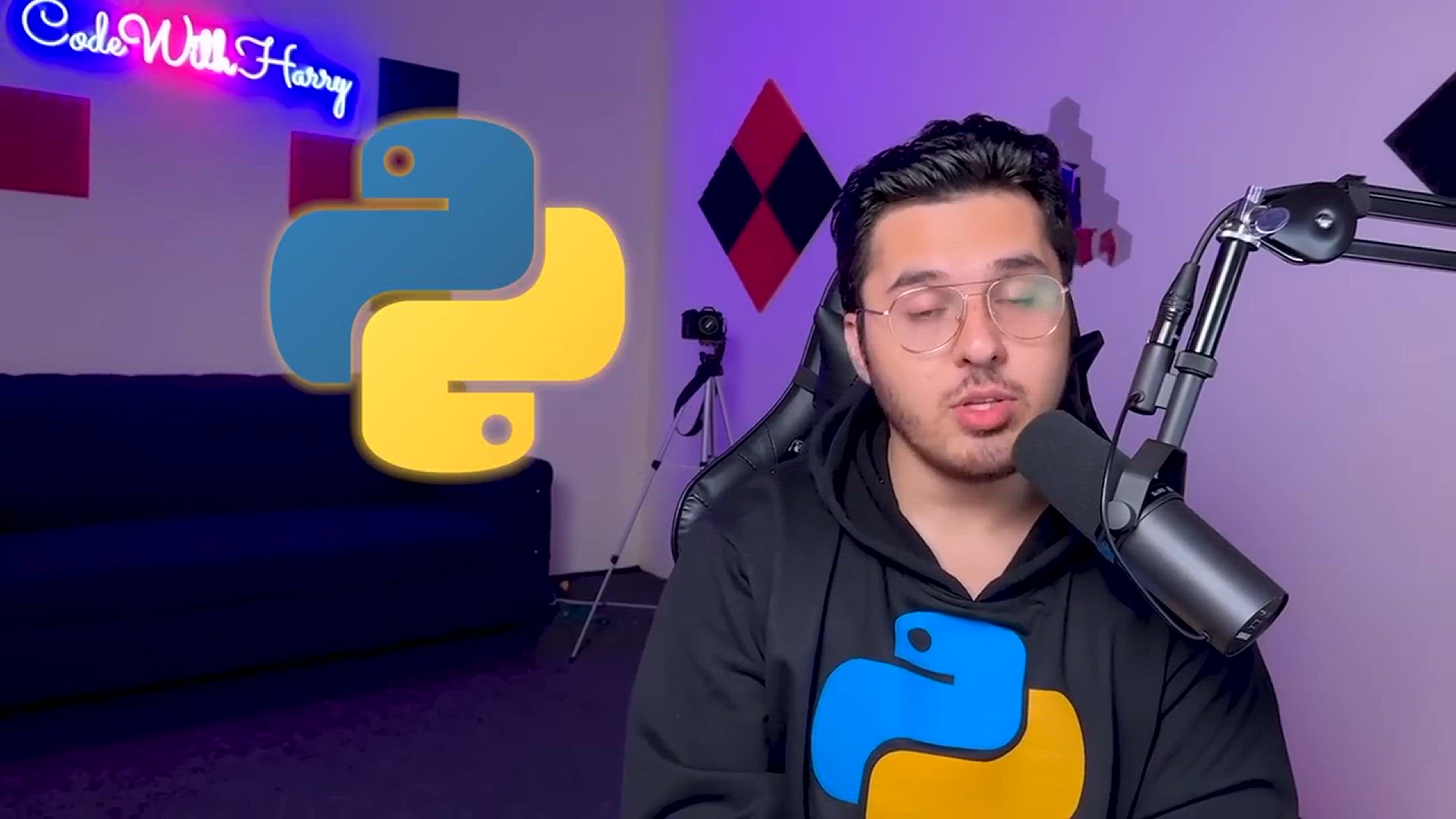
Match Case Statements in Python _ Python Tutorial - Day #16
37 views · Feb 10, 2024 codehunter.online
In the video "Match Case Statements in Python - Python Tutorial - Day #16", viewers explore the concept of match case statements, a new feature introduced in Python 3.10 for pattern matching. The tutorial covers how match case statements provide a concise and readable way to compare a value against a series of patterns and execute corresponding code blocks based on the matching pattern. Viewers learn about the syntax and usage of match case statements, including the "match" keyword, "case" blocks, and the "else" keyword for handling unmatched cases. Additionally, the tutorial demonstrates various examples to illustrate the versatility and effectiveness of match case statements in Python programming. By mastering match case statements, viewers gain a powerful tool for simplifying and structuring conditional logic in their Python programs. This tutorial is essential for intermediate Python developers looking to stay updated with the latest features and advancements in the language.

For Loops in Python _ Python Tutorial - Day #17
466 views · Feb 10, 2024 codehunter.online
In the video "For Loops in Python - Python Tutorial - Day #17", viewers delve into the concept of "for" loops in Python, a fundamental control flow structure used for iterating over sequences such as lists, tuples, strings, or range objects. The tutorial covers the syntax of "for" loops and demonstrates how they can be used to perform repetitive tasks efficiently. Viewers learn how to iterate over elements in a sequence, execute code blocks within the loop body, and utilize the "range()" function to generate sequences of numbers. Additionally, the tutorial explores advanced techniques such as nested loops and using "break" and "continue" statements to control loop execution. By mastering "for" loops, viewers gain a versatile tool for automating repetitive tasks and processing data within their Python programs. This tutorial is essential for beginners looking to enhance their understanding of iteration and control flow in Python programming.

While Loops in Python _ Python Tutorial - Day #18
6 views · Feb 10, 2024 codehunter.online
In the video "While Loops in Python - Python Tutorial - Day #18", viewers explore the concept of "while" loops in Python, another fundamental control flow structure used for iterating until a specified condition is met. The tutorial covers the syntax of "while" loops and demonstrates how they can be used to execute code blocks repeatedly as long as a certain condition remains true. Viewers learn how to set up and utilize "while" loops effectively, including handling loop control variables, avoiding infinite loops, and incorporating conditional statements within the loop body. Additionally, the tutorial explores common use cases for "while" loops, such as iterative algorithms and input validation. By mastering "while" loops, viewers gain a powerful tool for creating dynamic and responsive programs that adapt to changing conditions. This tutorial is essential for beginners seeking to deepen their understanding of iteration and control flow in Python programming.

Function Arguments in Python _ Python Tutorial - Day #21
2 views · Feb 10, 2024 codehunter.online
In the video "Function Arguments in Python - Python Tutorial - Day #21", viewers explore the versatility of function arguments in Python, which allow for flexible and dynamic behavior when calling functions. The tutorial covers various types of function arguments, including positional arguments, keyword arguments, default arguments, and variable-length arguments (*args and **kwargs). Viewers learn how to define functions with different argument types and understand the rules for argument precedence and ordering. Additionally, the tutorial demonstrates practical examples of using different types of function arguments to handle diverse scenarios and customize function behavior. By mastering function arguments, viewers gain the ability to create more versatile and adaptable functions in Python, improving code readability and maintainability. This tutorial is crucial for intermediate Python developers seeking to enhance their understanding of function design and usage.

Introduction to Lists in Python _ Python Tutorial - Day #22
384 views · Feb 10, 2024 codehunter.online
In the video "Introduction to Lists in Python - Python Tutorial - Day #22", viewers are introduced to one of the most versatile and commonly used data structures in Python: lists. The tutorial covers the basics of lists, including how to create, access, and manipulate lists in Python. Viewers learn about the syntax for defining lists, as well as methods for adding, removing, and modifying elements within lists. Additionally, the tutorial explores various operations that can be performed on lists, such as indexing, slicing, iterating, and concatenating lists. By mastering lists, viewers gain a powerful tool for storing and organizing collections of data in their Python programs. This tutorial is essential for beginners seeking to build a solid foundation in Python data structures and programming concepts.

List Methods in Python _ Python Tutorial - Day #23
825 views · Feb 10, 2024 codehunter.online
In the video "List Methods in Python - Python Tutorial - Day #23", viewers dive deeper into the functionality of lists in Python by exploring built-in list methods. The tutorial covers a variety of methods that enable manipulation and transformation of lists, such as appending, extending, removing, sorting, and searching for elements within lists. Viewers learn how to use these methods effectively to modify lists in place or create new lists based on specific criteria. Additionally, the tutorial demonstrates practical examples of each method's usage to solve common programming tasks. By mastering list methods, viewers gain a comprehensive understanding of how to work with lists efficiently in Python, enhancing their ability to handle and process collections of data effectively. This tutorial is essential for intermediate Python developers looking to deepen their knowledge of Python data structures and programming techniques.

Tuples in Python _ Python Tutorial - Day #24
6 views · Feb 10, 2024 codehunter.online
In the video "Tuples in Python - Python Tutorial - Day #24", viewers are introduced to tuples, a versatile and immutable data structure in Python. The tutorial covers the basics of tuples, including how to create, access, and manipulate them. Unlike lists, tuples cannot be modified once created, making them suitable for representing fixed collections of elements. Viewers learn about the syntax for defining tuples, accessing elements using indexing, and utilizing tuple unpacking to assign multiple variables at once. Additionally, the tutorial explores practical use cases for tuples and demonstrates how they can be employed alongside lists and other data structures in Python programs. By mastering tuples, viewers expand their toolkit for organizing and managing data in Python, gaining insights into when to use tuples over other data structures. This tutorial is essential for beginners seeking to deepen their understanding of Python data structures and programming concepts.

Operations on Tuples in Python _ Python Tutorial - Day #25
139 views · Feb 10, 2024 codehunter.online
In the video "Operations on Tuples in Python - Python Tutorial - Day #25", viewers explore various operations and techniques for working with tuples in Python. The tutorial covers a range of topics, including tuple concatenation, repetition, indexing, slicing, and unpacking. Viewers learn how to combine and manipulate tuples using these operations to perform tasks such as data manipulation and structuring. Additionally, the tutorial demonstrates practical examples of each operation's usage to solve common programming challenges. By mastering operations on tuples, viewers gain a deeper understanding of how to effectively leverage tuples as immutable data structures in Python programs. This tutorial is essential for intermediate Python developers looking to enhance their proficiency in Python data manipulation and programming techniques.

Exercise 2_ Solution & Shoutouts _ Python Tutorial - Day...
480 views · Feb 10, 2024 codehunter.online
In the video "Exercise 2: Solution & Shoutouts - Python Tutorial - Day #26", viewers are provided with the solution to a coding exercise presented in a previous tutorial. The tutorial walks viewers through the completed solution for the exercise, explaining the code logic and implementation details. Additionally, the video includes shoutouts to viewers who have participated in the exercise or provided feedback, fostering engagement and community interaction. This video not only offers a resolution to the exercise but also acknowledges and appreciates viewer participation, creating a collaborative learning environment within the Python tutorial series. It serves as an opportunity for viewers to validate their solutions and receive recognition for their efforts.

Exercise 3_ Kaun Banega Crorepati (KBC) _ Python Tutorial - ...
41 views · Feb 10, 2024 codehunter.online
In the video "Exercise 3: Kaun Banega Crorepati (KBC) - Python Tutorial - Day #27", viewers are presented with a coding challenge inspired by the popular Indian game show "Kaun Banega Crorepati" (KBC). The tutorial guides viewers through the process of creating a Python program that simulates the gameplay of KBC, including features such as multiple-choice questions, lifelines, and a scoring system. Viewers are encouraged to write code that mimics the mechanics of the game, providing an interactive and engaging programming exercise. By completing this exercise, viewers have the opportunity to apply their Python programming skills to a real-world scenario while having fun with a familiar game concept. This tutorial fosters problem-solving skills and creativity among viewers while reinforcing their understanding of Python programming concepts.

Docstrings in Python _ Python Tutorial - Day #29
389 views · Feb 10, 2024 codehunter.online
In the video "Docstrings in Python - Python Tutorial - Day #29", viewers learn about docstrings, which are a form of inline documentation used to describe the purpose, usage, and behavior of functions, classes, and modules in Python. The tutorial covers the syntax and conventions for writing docstrings, including triple quotes and proper formatting guidelines. Viewers are guided through examples illustrating how to write informative and descriptive docstrings for their Python code, emphasizing the importance of clear and concise documentation for code readability and maintainability. Additionally, the tutorial explores how docstrings can be accessed and utilized within Python programs, enabling users to retrieve documentation directly from code objects at runtime. By mastering docstrings, viewers enhance their ability to communicate the functionality and usage of their Python code effectively, promoting collaboration and understanding among developers. This tutorial is essential for developers looking to improve their documentation practices and contribute to a more robust and comprehensible codebase.

Recursion in Python _ Python Tutorial - Day #30
22 views · Feb 10, 2024 codehunter.online
Recursion in Python _ Python Tutorial - Day #30
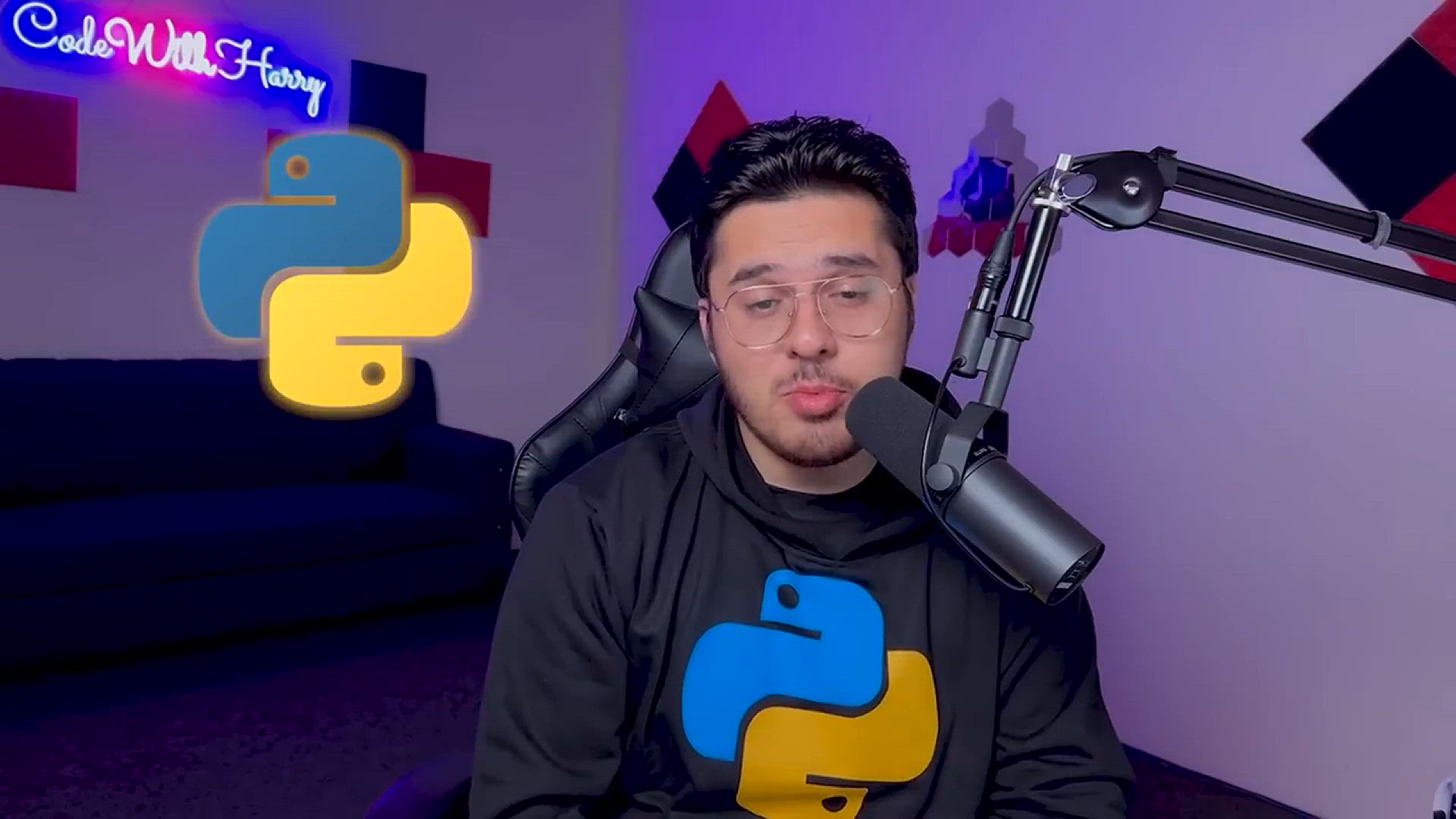
Sets in Python _ Python Tutorial - Day #31
34 views · Feb 10, 2024 codehunter.online
In the video "Sets in Python - Python Tutorial - Day #31", viewers are introduced to sets, an unordered collection of unique elements in Python. The tutorial covers the basics of sets, including how to create and manipulate them using built-in methods and operators. Viewers learn about set operations such as union, intersection, difference, and symmetric difference, which enable efficient manipulation and comparison of sets. Additionally, the tutorial explores practical examples of using sets to perform tasks such as removing duplicates from lists, testing for membership, and performing set operations on data sets. By mastering sets, viewers gain a valuable tool for handling collections of unique elements and solving various programming challenges efficiently in Python. This tutorial is essential for beginners and intermediate Python developers seeking to expand their knowledge of Python data structures and programming techniques.

Set Methods in Python _ Python Tutorial - Day #32
246 views · Feb 10, 2024 codehunter.online
In the video "Set Methods in Python - Python Tutorial - Day #32", viewers dive deeper into the functionality of sets in Python by exploring built-in set methods. The tutorial covers a variety of methods that enable manipulation and transformation of sets, such as adding and removing elements, performing set operations, and testing for membership. Viewers learn how to use these methods effectively to modify sets in place or create new sets based on specific criteria. Additionally, the tutorial demonstrates practical examples of each method's usage to solve common programming tasks. By mastering set methods, viewers gain a comprehensive understanding of how to work with sets efficiently in Python, enhancing their ability to handle and process collections of unique elements effectively. This tutorial is essential for intermediate Python developers looking to deepen their knowledge of Python data structures and programming techniques.

Dictionaries in Python _ Python Tutorial - Day #33
5K views · Feb 10, 2024 codehunter.online
In the video "Dictionaries in Python - Python Tutorial - Day #33", viewers are introduced to dictionaries, a versatile and unordered collection of key-value pairs in Python. The tutorial covers the basics of dictionaries, including how to create, access, and manipulate them using built-in methods and operators. Viewers learn about the syntax for defining dictionaries, accessing values using keys, and modifying dictionaries by adding, updating, or removing key-value pairs. Additionally, the tutorial explores practical examples of using dictionaries to represent and manipulate data, such as creating lookup tables, counting occurrences of elements, and organizing data efficiently. By mastering dictionaries, viewers gain a powerful tool for organizing and managing data in Python programs. This tutorial is essential for beginners and intermediate Python developers seeking to deepen their understanding of Python data structures and programming techniques.
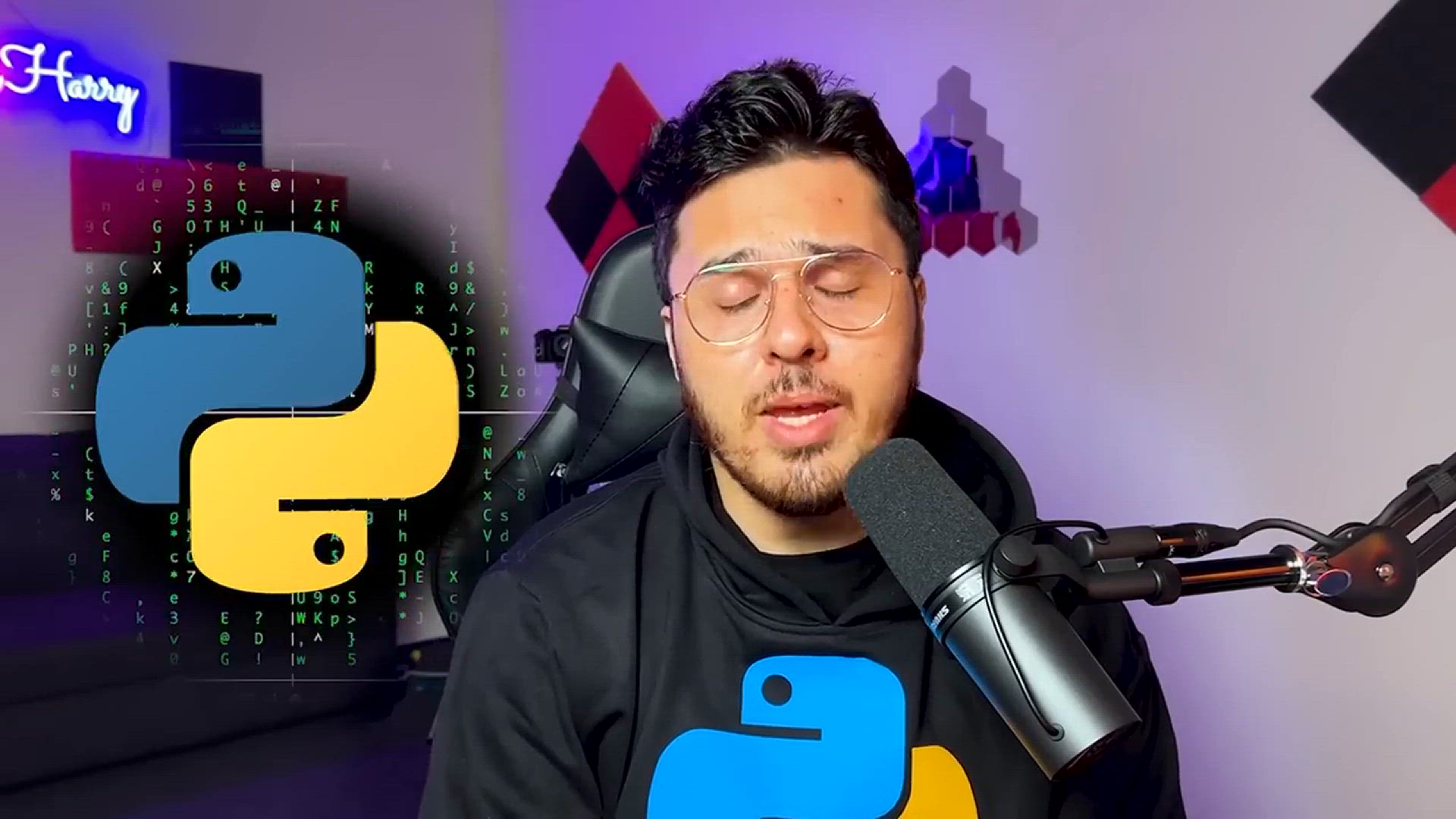
Dictionary Methods in Python _ Python Tutorial - Day #34
25K views · Feb 10, 2024 codehunter.online
In the video "Dictionary Methods in Python - Python Tutorial - Day #34", viewers delve into the functionality of dictionaries in Python by exploring built-in dictionary methods. The tutorial covers a variety of methods that enable manipulation and transformation of dictionaries, such as adding and removing key-value pairs, accessing keys and values, and performing dictionary operations like copying and clearing. Viewers learn how to use these methods effectively to modify dictionaries and perform common tasks such as merging dictionaries, retrieving keys or values, and checking for key existence. Additionally, the tutorial demonstrates practical examples of each method's usage to solve real-world programming challenges. By mastering dictionary methods, viewers gain a comprehensive understanding of how to work with dictionaries efficiently in Python, enhancing their ability to handle and process key-value data effectively. This tutorial is essential for intermediate Python developers looking to deepen their knowledge of Python data structures and programming techniques.

for Loop with else in Python _ Python Tutorial - Day #35
6 views · Feb 10, 2024 codehunter.online
In the video "for Loop with else in Python - Python Tutorial - Day #35", viewers explore the concept of using an "else" statement in conjunction with a "for" loop in Python. The tutorial covers how the "else" block is executed when the loop completes normally without encountering a "break" statement. Viewers learn how to leverage the "else" clause to add additional logic or actions to their code based on the completion of the loop. Additionally, the tutorial demonstrates practical examples of using "for" loops with "else" statements to handle scenarios such as searching for elements in a list or performing iterative tasks. By mastering the "for" loop with "else" construct, viewers enhance their ability to design more expressive and efficient Python code, improving code readability and maintainability. This tutorial is essential for Python developers seeking to expand their knowledge of loop control flow mechanisms and enhance their programming skills.

Exception Handling in Python _ Python Tutorial - Day #36
463 views · Feb 10, 2024 codehunter.online
In the video "Exception Handling in Python - Python Tutorial - Day #36", viewers learn about exception handling, a crucial aspect of Python programming for managing errors and unexpected behavior. The tutorial covers how to use try-except blocks to gracefully handle exceptions that may occur during program execution. Viewers are guided through examples demonstrating how to catch specific exceptions, handle multiple exceptions using multiple except clauses, and use the "finally" block for cleanup tasks. Additionally, the tutorial explores best practices for exception handling, such as providing informative error messages and avoiding overly broad exception catching. By mastering exception handling, viewers can create more robust and resilient Python programs that gracefully handle errors and ensure smoother execution. This tutorial is essential for Python developers seeking to improve their code reliability and user experience by effectively managing exceptions.
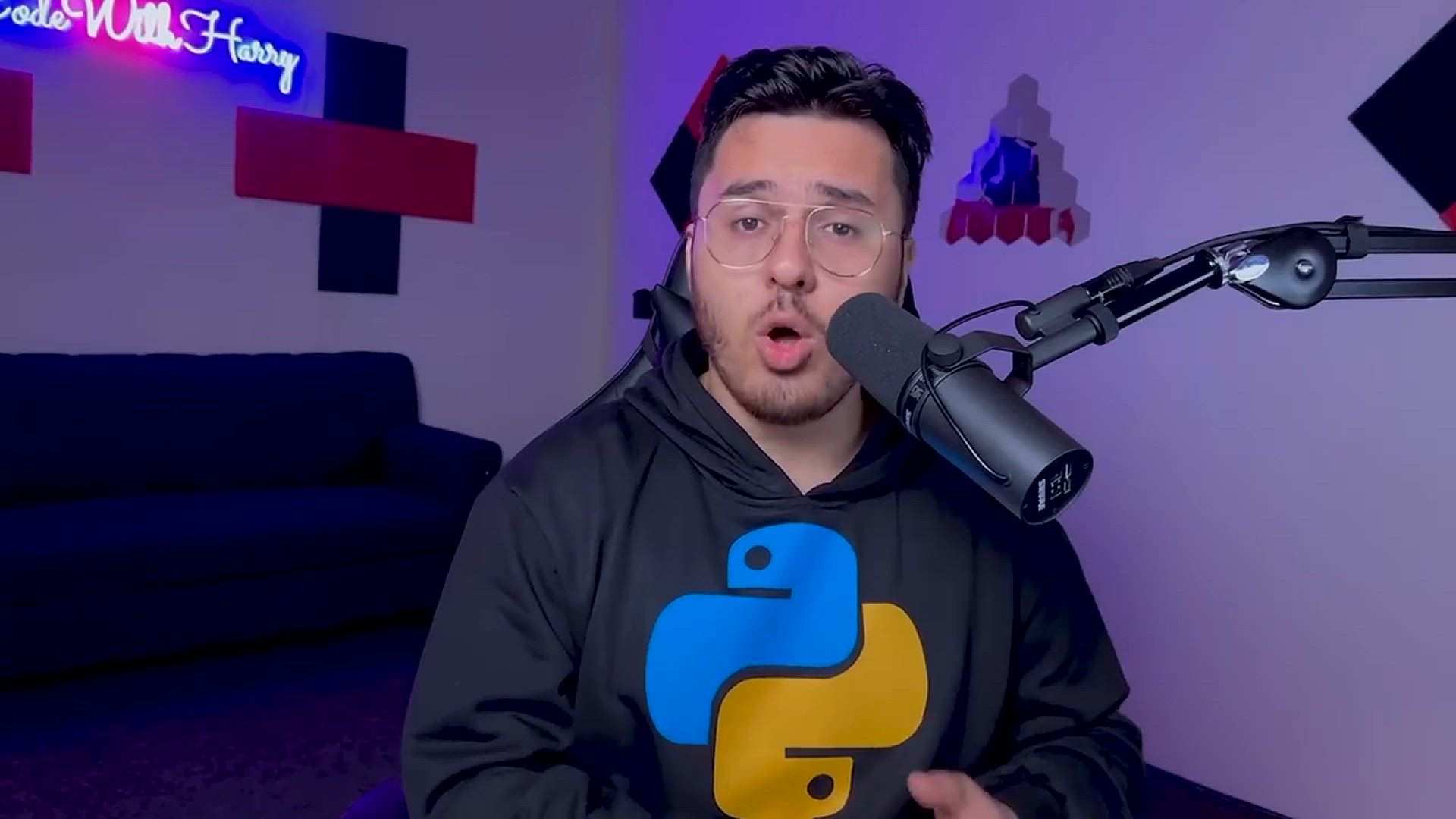
Finally keyword in Python _ Python Tutorial - Day #37
1K views · Feb 10, 2024 codehunter.online
In the video "Finally keyword in Python - Python Tutorial - Day #37", viewers explore the "finally" keyword in Python, which is used in exception handling to ensure that certain code blocks are always executed, regardless of whether an exception occurs or not. The tutorial covers how the "finally" block is used to perform cleanup tasks, such as closing files or releasing resources, after executing try and except blocks. Viewers learn about the syntax and usage of the "finally" keyword, as well as its role in ensuring program reliability and resource management. Additionally, the tutorial demonstrates practical examples of using the "finally" keyword to handle cleanup tasks in exception handling scenarios. By mastering the "finally" keyword, viewers enhance their ability to write more robust and maintainable Python code that handles exceptions gracefully and ensures proper cleanup of resources. This tutorial is essential for Python developers seeking to improve their code reliability and resource management practices.

Raising custom errors in Python _ Python Tutorial - Day #38
352 views · Feb 10, 2024 codehunter.online
In the video "Raising custom errors in Python - Python Tutorial - Day #38", viewers learn how to create and raise custom exceptions in Python to handle specific error conditions in their programs. The tutorial covers the process of defining custom exception classes by inheriting from the built-in `Exception` class or its subclasses. Viewers are guided through examples demonstrating how to raise custom exceptions using the `raise` keyword, providing informative error messages and customizing exception behavior. Additionally, the tutorial explores best practices for designing and implementing custom exceptions to improve code readability and maintainability. By mastering the creation and handling of custom errors, viewers can enhance their ability to build robust and reliable Python applications that effectively handle unexpected conditions. This tutorial is essential for Python developers seeking to improve their error handling practices and create more resilient software solutions.

Kaun Banega Crorepati_ Exercise 3 - Solution & Shoutouts...
55 views · Feb 10, 2024 codehunter.online
In the video "Raising custom errors in Python - Python Tutorial - Day #38", viewers learn how to create and raise custom exceptions in Python to handle specific error conditions in their programs. The tutorial covers the process of defining custom exception classes by inheriting from the built-in `Exception` class or its subclasses. Viewers are guided through examples demonstrating how to raise custom exceptions using the `raise` keyword, providing informative error messages and customizing exception behavior. Additionally, the tutorial explores best practices for designing and implementing custom exceptions to improve code readability and maintainability. By mastering the creation and handling of custom errors, viewers can enhance their ability to build robust and reliable Python applications that effectively handle unexpected conditions. This tutorial is essential for Python developers seeking to improve their error handling practices and create more resilient software solutions.

Exercise 4_ Secret Code Language _ Python Tutorial - Day #40
249 views · Feb 10, 2024 codehunter.online
In the video "Exercise 4: Secret Code Language - Python Tutorial - Day #40", viewers are presented with a new coding challenge aimed at applying their Python programming skills to create a secret code language translator. The tutorial guides viewers through the process of designing and implementing a Python program that can encode and decode messages using a custom secret code language. Viewers are encouraged to write code that translates text into the secret code language and back, enabling them to practice string manipulation, conditionals, and loop structures. By completing this exercise, viewers reinforce their understanding of Python programming concepts while engaging in a fun and practical coding challenge. This tutorial fosters problem-solving skills and creativity among viewers while providing hands-on experience with Python programming.

Short hand if else statements _ Python Tutorial - Day #41
57 views · Feb 10, 2024 codehunter.online
In the video "Short hand if else statements - Python Tutorial - Day #41", viewers explore the concept of shorthand if-else statements, also known as ternary operators, in Python. The tutorial covers how to use this concise syntax to write conditional expressions in a single line, reducing verbosity and improving code readability. Viewers learn the syntax and usage of the shorthand if-else statement, which follows the format `value_if_true if condition else value_if_false`. Additionally, the tutorial demonstrates practical examples of using shorthand if-else statements to simplify code and make it more succinct. By mastering shorthand if-else statements, viewers enhance their ability to write cleaner and more concise Python code, improving code maintainability and efficiency. This tutorial is essential for Python developers seeking to streamline their coding practices and adopt more elegant solutions to conditional expressions.

Enumerate Function in Python _ Python Tutorial - Day #42
183 views · Feb 10, 2024 codehunter.online
In the video "Enumerate Function in Python - Python Tutorial - Day #42", viewers learn about the enumerate() function, a useful built-in function in Python for iterating over an iterable while also providing an index for each item. The tutorial covers the syntax and usage of the enumerate() function, which returns an iterator yielding tuples of index and value pairs. Viewers are guided through examples demonstrating how to use enumerate() in various contexts, such as iterating over lists, strings, and other iterables, and accessing both the index and value within a loop. Additionally, the tutorial explores practical use cases for enumerate(), including when processing data and generating formatted output. By mastering the enumerate() function, viewers can simplify their code and improve the clarity of their iterative processes in Python. This tutorial is essential for Python developers seeking to enhance their understanding of iteration techniques and improve their programming efficiency.

if __name__ == ___main___ in Python _ Python Tutorial - Day ...
0 views · Feb 10, 2024 codehunter.online
In the video "if __name__ == __main__ in Python - Python Tutorial - Day #45", viewers learn about the special conditional statement often used in Python scripts. The tutorial explains how the `if __name__ == "__main__"` block allows code within it to run only when the script is executed directly, rather than imported as a module into another script. Viewers are guided through examples illustrating how this construct enables the separation of reusable code into modules and the execution of script-specific code when the script is run directly. Additionally, the tutorial explores practical use cases for this conditional statement, such as creating script entry points and facilitating testing. By mastering the `if __name__ == "__main__"` construct, viewers enhance their ability to create modular and reusable Python code that remains versatile and adaptable to various execution contexts. This tutorial is essential for Python developers seeking to improve their code organization and understand the nuances of script execution in Python.

Virtual Environment in Python _ Python Tutorial - Day #43
207 views · Feb 10, 2024 codehunter.online
In the video "Virtual Environment in Python - Python Tutorial - Day #43", viewers are introduced to virtual environments, a vital tool for managing dependencies and isolating project environments in Python. The tutorial covers how to create and manage virtual environments using the built-in venv module or third-party tools like virtualenv and pipenv. Viewers learn about the benefits of using virtual environments, such as avoiding conflicts between project dependencies and ensuring consistent package versions across projects. Additionally, the tutorial demonstrates practical examples of setting up and activating virtual environments, installing packages within them, and deactivating and deleting virtual environments. By mastering virtual environments, viewers gain a better understanding of how to maintain clean and organized Python development environments, facilitating smoother project development and deployment processes. This tutorial is essential for Python developers seeking to improve their workflow and dependency management practices.

os Module in Python _ Python Tutorial - Day #46
47 views · Feb 10, 2024 codehunter.online
In the video "os Module in Python - Python Tutorial - Day #46", viewers explore the os module, a powerful tool for interacting with the operating system in Python. The tutorial covers various functionalities provided by the os module, such as file and directory manipulation, process management, and system-related operations. Viewers learn how to use the os module to perform tasks like navigating directories, creating, moving, and deleting files and folders, and accessing environment variables. Additionally, the tutorial demonstrates practical examples of using the os module to work with file paths, execute system commands, and handle file permissions. By mastering the os module, viewers gain a deeper understanding of how to create versatile and platform-independent Python applications that interact effectively with the underlying operating system. This tutorial is essential for Python developers seeking to improve their system-level programming skills and enhance their ability to build robust and portable applications.

How import works in Python _ Python Tutorial - Day #44
185 views · Feb 10, 2024 codehunter.online
In the video "How import works in Python - Python Tutorial - Day #44", viewers explore the intricacies of importing modules and packages in Python. The tutorial covers how Python's import system locates, loads, and executes modules and packages. Viewers learn about the different ways to import modules, including absolute and relative imports, as well as aliasing module names using the `as` keyword. Additionally, the tutorial delves into the concept of the module search path, explaining how Python locates modules in various directories and packages. Practical examples illustrate how to organize and import modules effectively in Python projects. By mastering how import works in Python, viewers gain a deeper understanding of module management and code organization, improving their ability to build and maintain Python projects. This tutorial is essential for Python developers seeking to optimize their workflow and structure their code efficiently.

Exercise 4_ Solutions and Shoutouts _ Python Tutorial - Day ...
24 views · Feb 10, 2024 codehunter.online
In the video "Exercise 4: Solutions and Shoutouts - Python Tutorial - Day #47", viewers are provided with the solutions to the coding challenge introduced in a previous tutorial. The tutorial walks viewers through the completed solutions for the exercise, explaining the logic and implementation details. Additionally, the video includes shoutouts to viewers who have participated in the exercise or provided feedback, fostering engagement and community interaction. This video not only offers resolutions to the exercise but also acknowledges and appreciates viewer participation, creating a collaborative learning environment within the Python tutorial series. It serves as an opportunity for viewers to validate their solutions and receive recognition for their efforts.
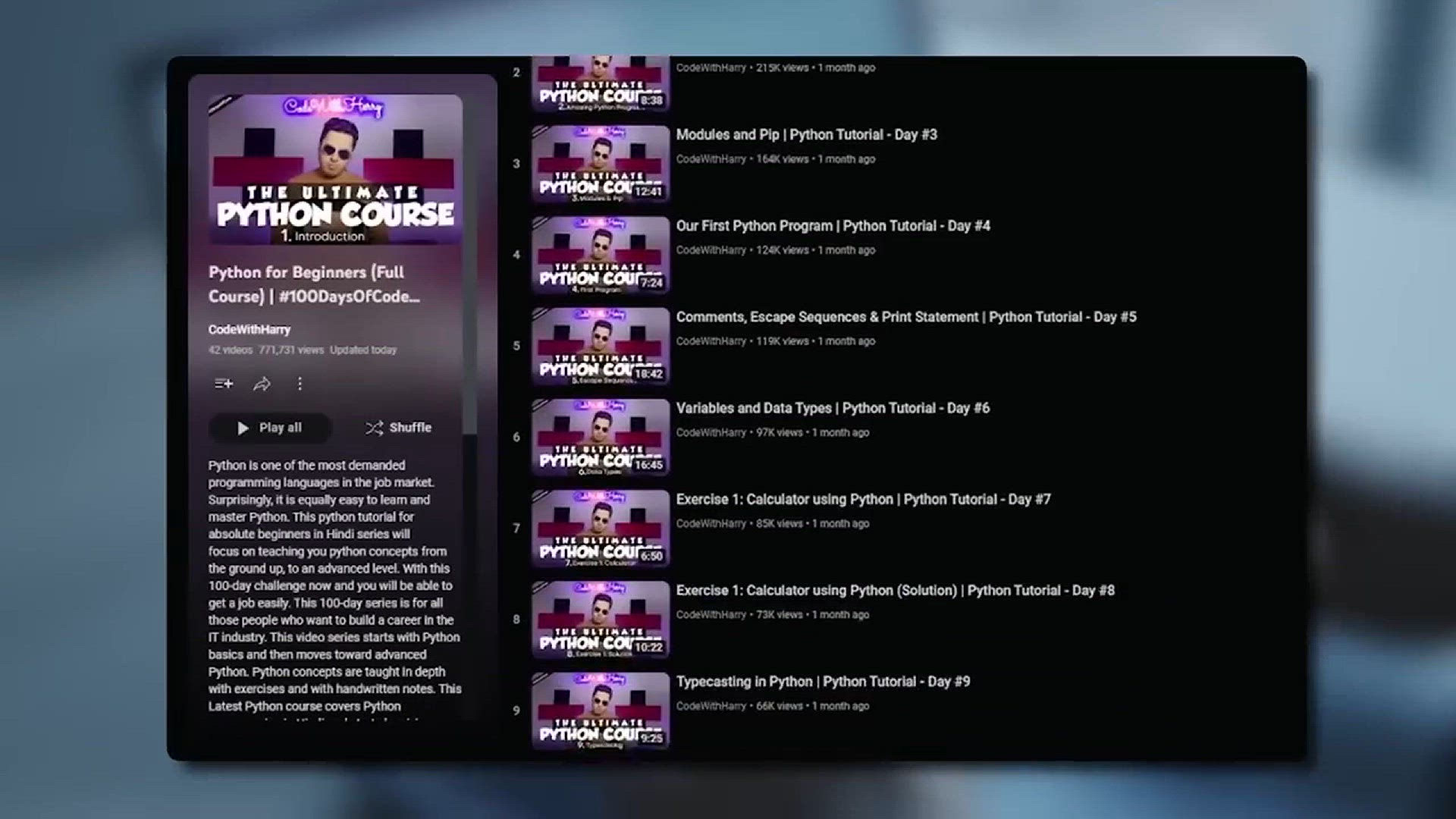
Local vs Global Variables in Python_ Python Tutorial - Day #...
8K views · Feb 10, 2024 codehunter.online
In the video "Local vs Global Variables in Python - Python Tutorial - Day #48", viewers explore the concept of local and global variables in Python. The tutorial explains the distinction between these variable scopes, highlighting how local variables are defined within a specific function and have limited visibility, while global variables are defined outside functions and can be accessed from anywhere in the program. Viewers learn about the importance of understanding variable scope for maintaining code clarity and avoiding unintended side effects. Additionally, the tutorial provides practical examples illustrating how to properly declare and use local and global variables in Python programs. By mastering the concept of variable scope, viewers gain a deeper understanding of Python's execution model and can write more structured and maintainable code. This tutorial is essential for Python developers seeking to improve their understanding of variable scope and its implications on program behavior.
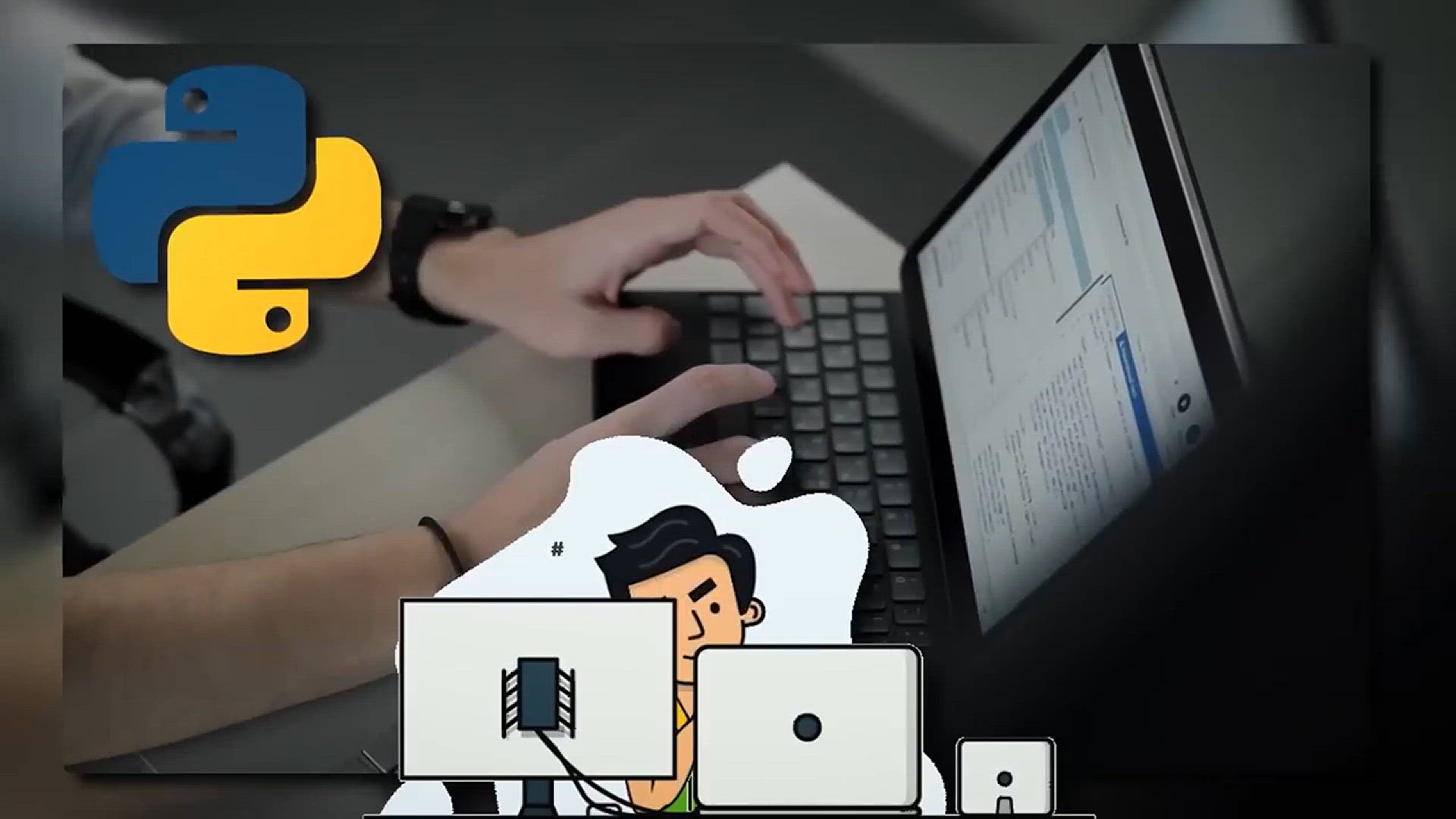
File IO in Python _ Python Tutorial - Day #49
132 views · Feb 10, 2024 codehunter.online
In the video "File IO in Python - Python Tutorial - Day #49", viewers are introduced to file input/output (IO) operations in Python. The tutorial covers how to open, read from, write to, and close files using built-in functions and methods in Python's file handling module. Viewers learn about different file modes (such as read, write, append) and how to handle files in both text and binary modes. Additionally, the tutorial explores error handling and best practices for file IO operations, such as using context managers (with statement) to automatically close files and dealing with exceptions. Practical examples demonstrate how to read and write data to files, process file content line by line, and manipulate file pointers. By mastering file IO in Python, viewers gain the ability to interact with external files, manipulate data, and store information persistently, essential skills for a wide range of applications from data processing to file management. This tutorial is essential for Python developers seeking to handle file operations efficiently and effectively in their projects.

read(), readlines() and other methods _ Python Tutorial - Da...
6K views · Feb 10, 2024 codehunter.online
In the video "read(), readlines() and other methods - Python Tutorial - Day #50", viewers explore various methods for reading and processing file contents in Python. The tutorial focuses on the read() and readlines() methods available for file objects, demonstrating how they differ in terms of reading file content. Viewers learn how read() reads the entire file content as a single string, while readlines() reads the file line by line and returns a list of lines. Additionally, the tutorial covers other useful methods for file processing, such as readline() for reading a single line at a time, and seek() and tell() for controlling the file pointer position and obtaining its current location. Practical examples illustrate the usage of these methods to read and process file data effectively. By mastering these file reading methods, viewers gain a deeper understanding of file IO operations in Python and can handle file content efficiently in their projects. This tutorial is essential for Python developers seeking to work with file data and manipulate it according to their application's requirements.

seek(), tell() and other functions _ Python Tutorial - Day #...
43 views · Feb 10, 2024 codehunter.online
In the video "seek(), tell() and other functions - Python Tutorial - Day #51", viewers delve into additional file handling functions beyond read() and readlines(). The tutorial primarily focuses on the seek() and tell() functions, which are used to manage the file's current position and retrieve its current offset, respectively. Viewers learn how to utilize these functions to navigate within files, read specific portions of data, or update file pointers for efficient file processing. Additionally, the tutorial covers other useful file handling functions such as truncate() for resizing a file, flush() for flushing the file buffer, and close() for closing the file object. Practical examples demonstrate the usage of these functions in various file manipulation scenarios. By mastering these file handling functions, viewers enhance their ability to manage file operations effectively, ensuring precise control over file access and manipulation in Python programs. This tutorial is essential for Python developers seeking to deepen their understanding of file IO operations and improve their file handling skills.

Lambda functions in Python _ Python Tutorial - Day #52
0 views · Feb 10, 2024 codehunter.online
In the video "Lambda functions in Python - Python Tutorial - Day #52", viewers explore lambda functions, also known as anonymous functions, which are concise functions defined without a name using the lambda keyword. The tutorial covers the syntax and usage of lambda functions, which can take any number of arguments but can only have one expression. Viewers learn how to create and use lambda functions effectively, particularly in situations where a small, one-off function is needed, such as in sorting or filtering operations. Additionally, the tutorial demonstrates practical examples of using lambda functions in conjunction with built-in functions like map(), filter(), and sorted() to perform various data manipulation tasks. By mastering lambda functions, viewers gain a powerful tool for writing more expressive and concise Python code, improving code readability and maintainability. This tutorial is essential for Python developers seeking to leverage the flexibility and versatility of lambda functions in their programming projects.

Map, Filter and Reduce in Python _ Python Tutorial - Day #53
26 views · Feb 10, 2024 codehunter.online
In the video "Map, Filter, and Reduce in Python - Python Tutorial - Day #53", viewers are introduced to three powerful higher-order functions in Python: map(), filter(), and reduce(). The tutorial explains how these functions can be used to perform operations on iterables such as lists, tuples, or sets, facilitating concise and efficient data processing. Viewers learn about the syntax and usage of each function: 1. map(): Applies a function to each element of an iterable and returns an iterator of the results. 2. filter(): Filters elements from an iterable based on a given predicate function. 3. reduce(): Reduces a sequence of elements to a single value by applying a binary function cumulatively. Practical examples demonstrate how to use these functions to manipulate and transform data effectively. By mastering map(), filter(), and reduce(), viewers can streamline their code and perform complex operations on data structures with ease. This tutorial is essential for Python developers seeking to enhance their understanding of functional programming concepts and leverage these powerful functions in their projects.

'is' vs '==' in Python _ Python Tutorial - D...
421 views · Feb 10, 2024 codehunter.online
In the video " 'is' vs '==' in Python - Python Tutorial - Day #54", viewers explore the differences between the 'is' and '==' operators in Python for comparing objects. The tutorial elucidates how '==' checks for the equality of the values of two objects, while 'is' checks if the objects themselves occupy the same memory location, indicating identity. Viewers learn about the nuances of object comparison in Python, including the implications of mutable and immutable objects on 'is' and '=='. Additionally, practical examples demonstrate when to use each operator based on the desired comparison semantics. By mastering the distinctions between 'is' and '==', viewers can make informed decisions when comparing objects in Python, ensuring accurate and efficient code. This tutorial is essential for Python developers seeking a deeper understanding of object comparison in Python and improving their programming skills.

Exercise 5 - Snake Water Gun _ Python Tutorial - Day #55
52 views · Feb 10, 2024 codehunter.online
In the video "Exercise 5 - Snake Water Gun - Python Tutorial - Day #55", viewers are presented with a Python coding exercise involving the popular game "Snake Water Gun" (also known as Rock Paper Scissors). The tutorial guides viewers through the process of creating a Python program that simulates the game, allowing users to play against the computer. Viewers learn how to implement the game logic, generate computer choices randomly, and compare user input with computer choices to determine the winner. Additionally, the tutorial explores how to handle user input validation and provide feedback to the user regarding game outcomes. By completing this exercise, viewers gain hands-on experience applying Python programming concepts such as conditionals, loops, and random number generation to implement a fun and interactive game. This tutorial is essential for Python developers seeking to practice their programming skills and enhance their understanding of Python syntax and logic.

Introduction to OOPs in Python _ Python Tutorial - Day #56
109 views · Feb 10, 2024 codehunter.online
In the video "Introduction to OOPs in Python - Python Tutorial - Day #56", viewers are introduced to Object-Oriented Programming (OOP) concepts in Python. The tutorial covers the fundamental principles of OOP, including classes, objects, attributes, and methods. Viewers learn how to define classes and create objects, encapsulate data and behavior within classes, and instantiate objects to utilize their functionality. Additionally, the tutorial explores inheritance, polymorphism, and encapsulation, key concepts that enable code reuse, modularity, and maintainability in OOP. Practical examples demonstrate how to implement OOP concepts in Python, enabling viewers to create more organized, scalable, and reusable code. By mastering OOP in Python, viewers gain a deeper understanding of software design principles and can leverage the power of OOP to build complex and efficient applications. This tutorial is essential for Python developers seeking to transition from procedural to object-oriented programming paradigms and elevate their programming skills.

Classes and Objects in Python _ Python Tutorial - Day #57
216 views · Feb 10, 2024 codehunter.online
In the video "Classes and Objects in Python - Python Tutorial - Day #57", viewers delve into the core concepts of object-oriented programming (OOP) in Python, focusing on classes and objects. The tutorial elucidates how classes serve as blueprints for creating objects, encapsulating data and methods within a single entity. Viewers learn how to define classes, declare attributes, and implement methods to manipulate class data. Additionally, the tutorial demonstrates how to create objects from classes, access their attributes and methods, and instantiate multiple instances of a class. Practical examples illustrate the usage of classes and objects in Python programming, highlighting their role in promoting code modularity, reusability, and maintainability. By mastering classes and objects, viewers enhance their ability to design and implement complex systems in Python, leveraging the power of object-oriented programming paradigms. This tutorial is essential for Python developers seeking to strengthen their understanding of OOP concepts and elevate their programming skills.

Constructors in Python _ Python Tutorial - Day #58
14K views · Feb 10, 2024 codehunter.online
In the video "Constructors in Python - Python Tutorial - Day #58", viewers explore constructors, special methods in Python classes used for initializing objects. The tutorial explains how constructors are defined using the `__init__()` method and how they automatically execute when an object is created from a class. Viewers learn how to utilize constructors to set initial values for object attributes and perform initialization tasks. Additionally, the tutorial demonstrates practical examples of constructors in action, illustrating how they facilitate object initialization and streamline class instantiation. By mastering constructors, viewers can ensure that objects are properly initialized and ready for use, enhancing the robustness and efficiency of their Python programs. This tutorial is essential for Python developers seeking to understand object initialization in Python classes and improve their object-oriented programming skills.

Decorators in Python _ Python Tutorial - Day #59
65 views · Feb 10, 2024 codehunter.online
In the video "Decorators in Python - Python Tutorial - Day #59", viewers learn about decorators, a powerful feature in Python used to modify or extend the behavior of functions or methods without altering their original code. The tutorial covers how decorators are defined using functions that take another function as an argument and return a modified version of that function. Viewers explore practical examples demonstrating how decorators can be used to add functionality such as logging, authentication, or performance monitoring to existing functions. Additionally, the tutorial explains how decorators can be applied using the `@decorator_name` syntax to annotate functions. By mastering decorators, viewers can enhance code readability, maintainability, and reusability in their Python projects, leveraging decorators to add cross-cutting concerns to functions or methods. This tutorial is essential for Python developers seeking to improve their understanding of advanced Python features and enhance their programming skills.

Getters and Setters in Python _ Python Tutorial - Day #60
0 views · Feb 10, 2024 codehunter.online
In the video "Getters and Setters in Python - Python Tutorial - Day #60", viewers delve into the concept of getters and setters, a common pattern in object-oriented programming used to control access to class attributes. The tutorial explains how getters and setters are implemented using property methods in Python, enabling developers to define custom behavior for accessing and modifying object attributes. Viewers learn how to use property decorators to create getters and setters for class attributes, allowing for validation, transformation, or encapsulation of attribute values. Additionally, the tutorial demonstrates practical examples illustrating how getters and setters can be utilized to enforce data integrity and encapsulation in Python classes. By mastering getters and setters, viewers gain greater control over attribute access and manipulation, enhancing the robustness and flexibility of their Python programs. This tutorial is essential for Python developers seeking to deepen their understanding of object-oriented programming concepts and improve their code design practices.

Inheritance in Python _ Python Tutorial - Day #61
2K views · Feb 10, 2024 codehunter.online
In the video "Inheritance in Python - Python Tutorial - Day #61", viewers explore the concept of inheritance, a fundamental feature of object-oriented programming (OOP) that allows a class to inherit attributes and methods from another class. The tutorial explains how inheritance promotes code reuse and facilitates the creation of hierarchical relationships between classes. Viewers learn how to implement inheritance in Python by creating subclasses that inherit attributes and methods from a superclass using the `class Subclass(Superclass):` syntax. Additionally, the tutorial demonstrates practical examples illustrating how to override inherited methods, call superclass methods, and access superclass attributes in subclasses. By mastering inheritance, viewers can design more modular and extensible code, leveraging the power of OOP to create flexible and scalable software solutions in Python. This tutorial is essential for Python developers seeking to deepen their understanding of OOP principles and enhance their programming skills.

Access Modifiers in Python _ Python Tutorial - Day #62
8 views · Feb 10, 2024 codehunter.online
In the video "Access Modifiers in Python - Python Tutorial - Day #62", viewers are introduced to access modifiers, which are used to control the visibility and accessibility of class members in Python. The tutorial covers the three main access modifiers in Python: public, protected, and private, denoted respectively by no prefix, a single underscore, and a double underscore before the member name. Viewers learn how access modifiers affect the accessibility of class attributes and methods within and outside the class hierarchy. Additionally, the tutorial explores practical examples demonstrating how access modifiers can be used to enforce encapsulation and data hiding, improving code maintainability and security. By mastering access modifiers, viewers gain greater control over the visibility and accessibility of class members in their Python programs, enhancing code organization and readability. This tutorial is essential for Python developers seeking to understand and apply access control principles effectively in their object-oriented programming projects.

Snake Water Gun Game in Python - Exercise 5 - Solution _ Pyt...
15 views · Feb 10, 2024 codehunter.online
In the video "Snake Water Gun Game in Python - Exercise 5 - Solution - Python Tutorial - Day #63", viewers are presented with the solution to Exercise 5, which involves creating a Python program to simulate the "Snake Water Gun" game. The tutorial walks viewers through the completed solution, explaining the game logic and implementation details step by step. Viewers learn how to use Python to design the game, including generating computer choices, validating user input, and determining the winner based on the game rules. Additionally, the tutorial may cover additional enhancements or optimizations to the code, fostering deeper understanding and improvement of Python programming skills. By reviewing the solution, viewers can validate their own implementations, learn from the provided solution, and further develop their programming abilities. This tutorial is essential for Python developers seeking to practice their problem-solving skills and expand their knowledge of Python programming concepts through hands-on exercises.

Exercise 6 - Library Management System in Python _ Python Tu...
3K views · Feb 10, 2024 codehunter.online
In the video "Exercise 6 - Library Management System in Python - Python Tutorial - Day #64", viewers are presented with a challenging coding exercise aimed at implementing a Library Management System using Python. The tutorial guides viewers through the process of designing and developing a Python program that can manage library functions such as adding books, displaying available books, lending books, returning books, and more. Viewers learn how to utilize concepts like classes, objects, methods, and file handling to create a functional and efficient library management system. Additionally, the tutorial may cover best practices for code organization, error handling, and user interaction to ensure a robust and user-friendly application. By completing this exercise, viewers can practice their Python programming skills while gaining practical experience in software development. This tutorial is essential for Python developers seeking to enhance their problem-solving abilities and build real-world applications using Python.

Static Methods in Python _ Python Tutorial - Day #65
37 views · Feb 10, 2024 codehunter.online
In the video "Static Methods in Python - Python Tutorial - Day #65", viewers delve into static methods, a type of method in Python that does not operate on instance or class attributes and does not require access to the instance or class itself. The tutorial explains how static methods are defined using the `@staticmethod` decorator and are typically used for utility functions that are logically related to the class but do not require instance or class data. Viewers learn about the syntax and usage of static methods, which can be called directly from the class without creating an instance, making them useful for grouping related functions within a class namespace. Additionally, the tutorial demonstrates practical examples illustrating how to define and use static methods in Python classes. By mastering static methods, viewers can improve code organization, readability, and maintainability by encapsulating related functions within class definitions without relying on instance or class data. This tutorial is essential for Python developers seeking to enhance their understanding of class methods and utilize them effectively in their Python projects.

Instance variables vs Class variables in Python _ Python Tut...
208 views · Feb 10, 2024 codehunter.online
In the video "Instance variables vs Class variables in Python - Python Tutorial - Day #66", viewers explore the distinction between instance variables and class variables in Python classes. The tutorial elucidates how instance variables are unique to each object instance and are defined within the constructor method (`__init__()`), while class variables are shared among all instances of the class and are defined outside any method in the class. Viewers learn about the differences in scope, memory allocation, and usage of instance and class variables, and how they can influence the behavior of objects and classes in Python. Additionally, the tutorial demonstrates practical examples illustrating how to define, access, and modify instance and class variables in Python classes. By mastering the concepts of instance and class variables, viewers gain greater control over their object-oriented Python programs, ensuring proper encapsulation of data and behavior within classes. This tutorial is essential for Python developers seeking to deepen their understanding of object-oriented programming principles and improve their code design practices.

Exercise 6 Solution - Library Management Software in Python ...
28 views · Feb 10, 2024 codehunter.online
In the video "Exercise 6 Solution - Library Management Software in Python - Python Tutorial - Day #67", viewers are provided with the solution to the Library Management System exercise introduced in a previous tutorial. The tutorial walks viewers through the completed solution, explaining the implementation details and the logic behind building a functional library management software using Python. Viewers learn how to utilize concepts such as classes, methods, file handling, and user input handling to create a comprehensive and efficient library management system. Additionally, the tutorial may cover best practices for code organization, error handling, and user interaction to ensure a robust and user-friendly application. By reviewing the solution, viewers can validate their own implementations, learn from the provided solution, and further develop their programming abilities. This tutorial is essential for Python developers seeking to practice their problem-solving skills and gain practical experience in software development using Python.

Exercise 7 - Clear the Clutter _ Python Tutorial - Day #68
3K views · Feb 10, 2024 codehunter.online
In the video "Exercise 7 - Clear the Clutter - Python Tutorial - Day #68", viewers are presented with a coding exercise aimed at developing a Python program to organize files in a directory by categorizing them based on their extensions. The tutorial guides viewers through the process of designing and implementing a script that can scan a directory, identify files based on their extensions, and move them into respective folders. Viewers learn about concepts such as file handling, directory traversal, and string manipulation in Python. Additionally, the tutorial may cover how to handle exceptions, validate user input, and ensure the robustness of the program. By completing this exercise, viewers can practice their Python programming skills while gaining practical experience in automating file organization tasks. This tutorial is essential for Python developers seeking to improve their problem-solving abilities and develop practical solutions using Python.

Class Methods in Python _ Python Tutorial - Day #69
51 views · Feb 10, 2024 codehunter.online
In the video "Class Methods in Python - Python Tutorial - Day #69", viewers explore class methods, a type of method in Python that operates on the class itself rather than on instances of the class. The tutorial explains how class methods are defined using the `@classmethod` decorator and take the class itself (`cls`) as their first argument instead of the instance (`self`). Viewers learn about the syntax and usage of class methods, which can be used to create methods that manipulate class attributes, perform class-level operations, or create instances of the class using alternative constructors. Additionally, the tutorial demonstrates practical examples illustrating how to define and use class methods in Python classes. By mastering class methods, viewers gain greater flexibility and control over their class definitions, allowing for more versatile and modular code design. This tutorial is essential for Python developers seeking to deepen their understanding of object-oriented programming concepts and improve their code organization and design practices.

Class Methods as Alternative Constructors in Python _ Python...
9 views · Feb 10, 2024 codehunter.online
In the video "Class Methods as Alternative Constructors in Python - Python Tutorial - Day #70", viewers learn about using class methods as alternative constructors in Python. The tutorial explains how class methods can be utilized to provide additional ways to create class instances, beyond the regular constructor. Viewers discover how to define class methods using the `@classmethod` decorator, which take the class itself (`cls`) as the first parameter instead of the instance (`self`). Practical examples illustrate how class methods can accept different parameters or formats to create instances, providing flexibility and convenience in object instantiation. By mastering class methods as alternative constructors, viewers can enhance their codebase by offering multiple ways to create objects, catering to different use cases or input formats. This tutorial is essential for Python developers seeking to optimize their code design and improve the usability of their classes and objects.

dir, __dict__ and help method in Python _ Python Tutorial - ...
131 views · Feb 10, 2024 codehunter.online
In the video "dir, __dict__ and help method in Python - Python Tutorial - Day #71", viewers explore three essential tools for introspection and understanding in Python. The tutorial covers the `dir()` function, which retrieves the list of attributes and methods of an object; the `__dict__` attribute, which holds a dictionary containing an object's attributes and their values; and the `help()` function, which provides documentation and information about Python objects and modules. Viewers learn how to use these tools to inspect and understand the structure and functionality of Python objects, modules, and classes. Practical examples demonstrate how to utilize `dir()`, `__dict__`, and `help()` to explore built-in and user-defined objects, access their attributes and methods, and obtain documentation for Python functions and modules. By mastering these introspection tools, viewers gain deeper insights into Python programming and improve their ability to explore and understand Python code. This tutorial is essential for Python developers seeking to enhance their debugging, troubleshooting, and learning capabilities in Python programming.

super keyword in Python _ Python Tutorial - Day #72
167 views · Feb 10, 2024 codehunter.online
In the video "super keyword in Python - Python Tutorial - Day #72", viewers learn about the "super" keyword, an essential tool for calling methods and accessing attributes of a superclass from a subclass in Python. The tutorial explains how "super()" allows subclasses to invoke methods from their superclass, facilitating code reuse and enabling efficient method overriding. Viewers discover how to use "super()" to invoke the constructor of the superclass within the subclass, ensuring proper initialization of inherited attributes. Practical examples illustrate how to leverage the "super" keyword to build more maintainable and extensible class hierarchies in Python. By mastering the "super" keyword, viewers can enhance their understanding of inheritance and improve their object-oriented programming skills in Python. This tutorial is essential for Python developers seeking to create more modular and scalable codebases using object-oriented principles.

Magic_Dunder Methods in Python _ Python Tutorial - Day #73
141 views · Feb 10, 2024 codehunter.online
In the video "Magic_Dunder Methods in Python - Python Tutorial - Day #73", viewers are introduced to dunder (double underscore) methods, also known as magic methods, in Python. The tutorial explains how dunder methods are special methods that Python uses internally to perform various operations, such as object initialization, comparison, and arithmetic operations. Viewers learn about the syntax and usage of common dunder methods, such as `__init__`, `__str__`, `__add__`, `__eq__`, and `__len__`, among others. Practical examples demonstrate how to define and utilize dunder methods to customize the behavior of Python objects, enabling developers to create more expressive and intuitive classes. By mastering dunder methods, viewers can enhance their understanding of Python's object model and improve their ability to create powerful and flexible Python programs. This tutorial is essential for Python developers seeking to deepen their understanding of Python's special methods and leverage them effectively in their code.

Method Overriding in Python _ Python Tutorial - Day #74
44 views · Feb 10, 2024 codehunter.online
In the video "Method Overriding in Python - Python Tutorial - Day #74", viewers learn about method overriding, a key concept in object-oriented programming (OOP) where a subclass provides a specific implementation of a method that is already defined in its superclass. The tutorial explains how method overriding allows subclasses to modify or extend the behavior of inherited methods, providing flexibility and customization in class hierarchies. Viewers discover how to override methods in Python classes by redefining them in the subclass with the same name and signature as the superclass method. Practical examples illustrate how to effectively override methods to tailor the behavior of subclasses to their specific requirements. By mastering method overriding, viewers can create more specialized and efficient subclasses, enhancing code reusability and maintainability in Python projects. This tutorial is essential for Python developers seeking to deepen their understanding of inheritance and polymorphism in object-oriented programming.

Exercise 7 Solution + Shoutouts _ Python Tutorial - Day #75
33 views · Feb 10, 2024 codehunter.online
In the video "Exercise 7 Solution + Shoutouts - Python Tutorial - Day #75", viewers are presented with the solution to Exercise 7, which involved creating a Python program to organize files in a directory by categorizing them based on their extensions. The tutorial walks viewers through the completed solution, explaining the implementation details and the logic behind the script. Additionally, the video includes shoutouts, where the creator acknowledges and highlights the contributions, comments, or support from viewers, fostering a sense of community engagement. By reviewing the solution and shoutouts, viewers can validate their own implementations, learn from the provided solution, and further develop their programming abilities. This video is essential for Python developers seeking to practice their problem-solving skills, gain practical experience in software development, and engage with a supportive programming community.

Exercise 7 Solution + Shoutouts _ Python Tutorial - Day #75
931 views · Feb 10, 2024 codehunter.online
In the video "Exercise 7 Solution + Shoutouts - Python Tutorial - Day #75", viewers witness the solution to Exercise 7, which tasked them with developing a Python program to organize files in a directory by categorizing them based on their extensions. The tutorial presents the completed solution, delving into the implementation details and the underlying logic of the script. Additionally, the video includes shoutouts, where the creator acknowledges and appreciates the contributions, comments, or support from viewers, fostering a sense of community engagement and gratitude. Through this video, viewers not only gain insight into solving the exercise but also feel recognized and encouraged within the programming community.
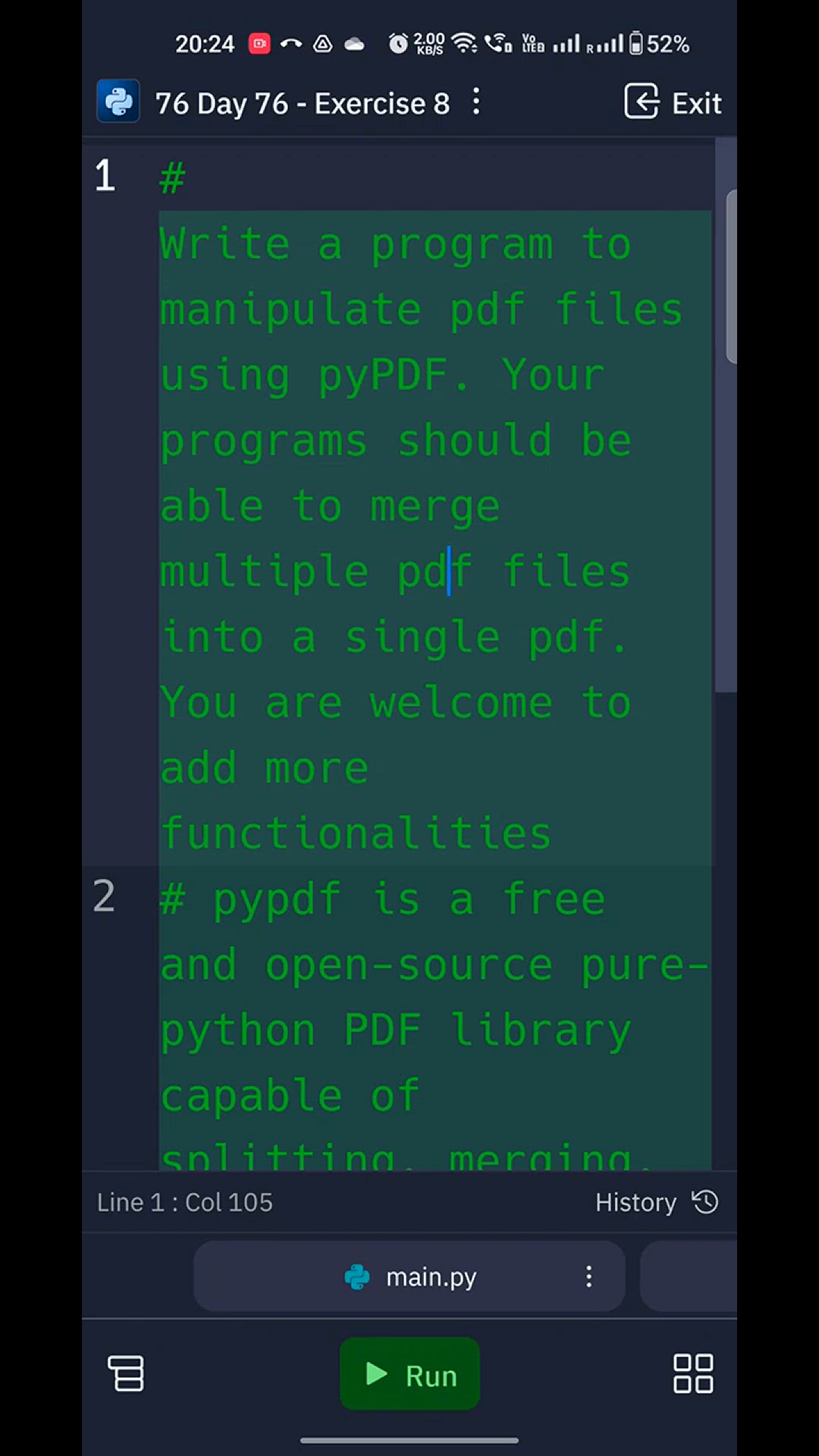
Exercise 8 - Merge the PDF _ Python Tutorial - Day #76
1 views · Feb 10, 2024 codehunter.online
In the video "Exercise 8 - Merge the PDF - Python Tutorial - Day #76", viewers are presented with a coding exercise that involves merging multiple PDF files into a single PDF document using Python. The tutorial guides viewers through the process of designing and implementing a Python script to achieve this task efficiently. Viewers learn about libraries and methods available in Python for working with PDF files, as well as how to handle file input and output operations. Additionally, the tutorial may cover error handling and best practices for managing PDF files programmatically. By completing this exercise, viewers can practice their Python programming skills while gaining practical experience in manipulating PDF documents. This tutorial is essential for Python developers seeking to enhance their file processing abilities and develop practical solutions for managing PDF files using Python.

Operator Overloading in Python _ Python Tutorial - Day #77
56K views · Feb 10, 2024 codehunter.online
In the video "Operator Overloading in Python - Python Tutorial - Day #77", viewers explore the concept of operator overloading, which allows developers to redefine the behavior of built-in operators for custom classes in Python. The tutorial explains how operator overloading enables objects to respond to arithmetic, comparison, and other operations using familiar syntax. Viewers learn how to implement operator overloading by defining special methods, also known as dunder methods, that correspond to specific operators (e.g., `__add__` for addition, `__sub__` for subtraction). Practical examples demonstrate how to customize the behavior of custom classes by overloading operators, enabling more intuitive and expressive code. By mastering operator overloading, viewers can create classes that behave like built-in types, enhancing the readability and usability of their Python code. This tutorial is essential for Python developers seeking to deepen their understanding of object-oriented programming and leverage advanced features of Python for custom class design.

Single Inheritance in Python _ Python Tutorial - Day #78
20 views · Feb 10, 2024 codehunter.online
In the video "Single Inheritance in Python - Python Tutorial - Day #78", viewers delve into the concept of single inheritance, a fundamental aspect of object-oriented programming in Python. The tutorial explains how single inheritance enables a subclass to inherit attributes and methods from a single superclass, forming a hierarchical relationship between classes. Viewers learn how to implement single inheritance in Python using the syntax `class Subclass(Superclass):`, where the subclass inherits from the superclass. Practical examples illustrate how to leverage single inheritance to create class hierarchies and share functionality between related classes. By mastering single inheritance, viewers can design more modular and extensible code, promoting code reusability and maintainability in Python projects. This tutorial is essential for Python developers seeking to deepen their understanding of inheritance and object-oriented programming principles.

Multiple Inheritance in Python _ Python Tutorial - Day #79
22 views · Feb 10, 2024 codehunter.online
In the video "Multiple Inheritance in Python - Python Tutorial - Day #79", viewers explore the concept of multiple inheritance, a powerful feature in object-oriented programming where a subclass can inherit attributes and methods from multiple parent classes. The tutorial explains how multiple inheritance allows developers to combine functionalities from different classes into a single subclass, enhancing code reuse and flexibility. Viewers learn about the syntax and usage of multiple inheritance in Python, where a subclass is defined with multiple superclass names separated by commas. Practical examples demonstrate how to leverage multiple inheritance to create complex class hierarchies and implement various design patterns. By mastering multiple inheritance, viewers can design more versatile and modular code, accommodating diverse requirements and promoting code reusability. This tutorial is essential for Python developers seeking to deepen their understanding of inheritance and object-oriented programming paradigms.

Multilevel Inheritance in Python _ Python Tutorial - Day #80
95 views · Feb 10, 2024 codehunter.online
In the video "Multilevel Inheritance in Python - Python Tutorial - Day #80", viewers explore the concept of multilevel inheritance, an aspect of object-oriented programming where a subclass inherits from another subclass, forming a hierarchical chain of classes. The tutorial elucidates how multilevel inheritance allows for the creation of a hierarchy of classes with each level inheriting attributes and methods from its parent class. Viewers learn about the syntax and implementation of multilevel inheritance in Python, understanding how each subclass builds upon the functionalities of its immediate superclass and all the classes above it in the hierarchy. Practical examples illustrate how to utilize multilevel inheritance to create class hierarchies that model real-world relationships and promote code organization and reusability. By mastering multilevel inheritance, viewers can design more structured and modular codebases, facilitating code maintenance and extensibility in Python projects. This tutorial is essential for Python developers seeking to deepen their understanding of inheritance and improve their object-oriented programming skills.

Hybrid and Hierarchical Inheritance in Python _ Python Tutor...
735 views · Feb 10, 2024 codehunter.online
In the video "Hybrid and Hierarchical Inheritance in Python - Python Tutorial - Day #81", viewers delve into advanced inheritance patterns in object-oriented programming. The tutorial introduces hybrid inheritance, which combines multiple inheritance with multilevel inheritance, allowing classes to inherit from multiple parent classes and form hierarchical chains simultaneously. Viewers learn about the syntax and implementation of hybrid inheritance in Python, understanding how to construct complex class hierarchies with diverse functionalities. Additionally, the tutorial covers hierarchical inheritance, a variation where subclasses inherit from a common superclass, forming a hierarchical tree structure. Practical examples illustrate how to leverage hybrid and hierarchical inheritance to design flexible and modular class architectures that accommodate various requirements and promote code reuse. By mastering these advanced inheritance patterns, viewers can develop sophisticated and scalable Python applications with well-organized class structures. This tutorial is essential for Python developers seeking to deepen their understanding of inheritance and enhance their object-oriented programming skills.

Exercise 8 - Merge the Pdf Solution in Python _ Python Tutor...
11 views · Feb 10, 2024 codehunter.online
In the video "Exercise 8 - Merge the PDF Solution in Python - Python Tutorial - Day #82", viewers are provided with the solution to Exercise 8, which involved merging multiple PDF files into a single PDF document using Python. The tutorial walks viewers through the completed solution, explaining the implementation details and the logic behind the script. Additionally, viewers may gain insights into libraries and methods available in Python for working with PDF files, as well as best practices for file input and output operations. By reviewing the solution, viewers can validate their own implementations, learn from the provided solution, and further develop their programming abilities in PDF manipulation using Python. This tutorial is essential for Python developers seeking to enhance their file processing skills and develop practical solutions for managing and manipulating PDF documents using Python.

Exercise 9 - Shoutouts to Everyone _ Python Tutorial - Day #...
1K views · Feb 10, 2024 codehunter.online
In the video "Exercise 9 - Shoutouts to Everyone - Python Tutorial - Day #83", viewers are engaged in a special session where the content creator gives shoutouts to the community. The tutorial may involve acknowledging and appreciating the contributions, comments, or support received from viewers, fostering a sense of community engagement and gratitude. Additionally, the content creator may share updates, announcements, or upcoming plans related to the Python tutorial series or other projects. By providing shoutouts, the content creator strengthens the community bond and encourages active participation among viewers. This session is essential for maintaining a supportive and interactive programming community while recognizing the valuable contributions of its members.
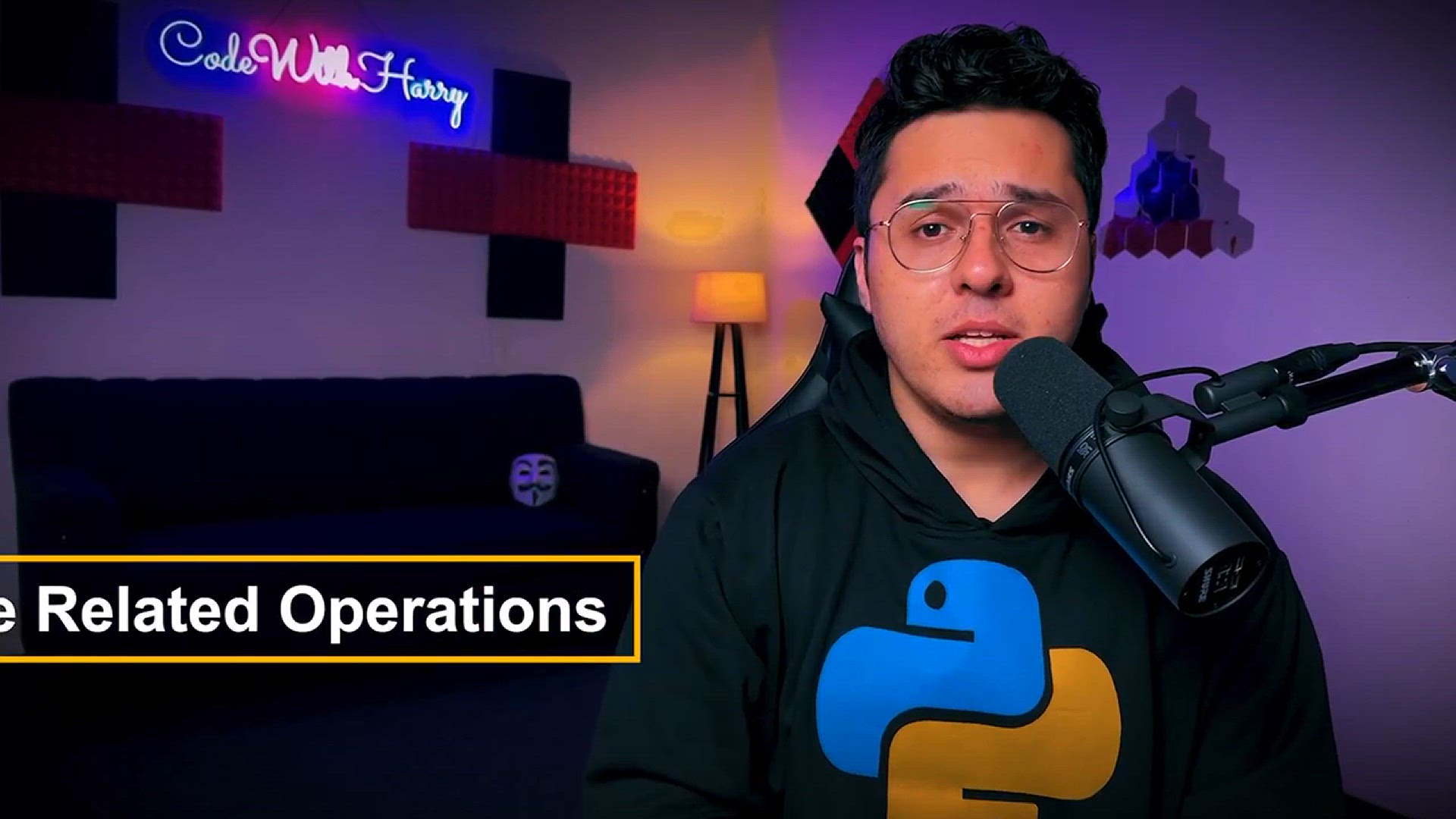
Time Module in Python _ Python Tutorial - Day #84
20K views · Feb 10, 2024 codehunter.online
In the video "Time Module in Python - Python Tutorial - Day #84", viewers are introduced to the time module in Python, which provides functions for working with time-related tasks. The tutorial covers various functionalities of the time module, including obtaining the current time, converting between different time representations, and performing time calculations. Viewers learn how to use functions such as `time()`, `ctime()`, `localtime()`, and `strftime()` to manipulate time data effectively. Additionally, the tutorial may demonstrate how to measure the execution time of Python code using the `timeit` module. By mastering the time module, viewers can perform various time-related operations and incorporate time functionality into their Python programs, such as scheduling tasks, measuring performance, or handling timestamps. This tutorial is essential for Python developers seeking to enhance their understanding of time manipulation and improve their proficiency in working with time-related tasks in Python.
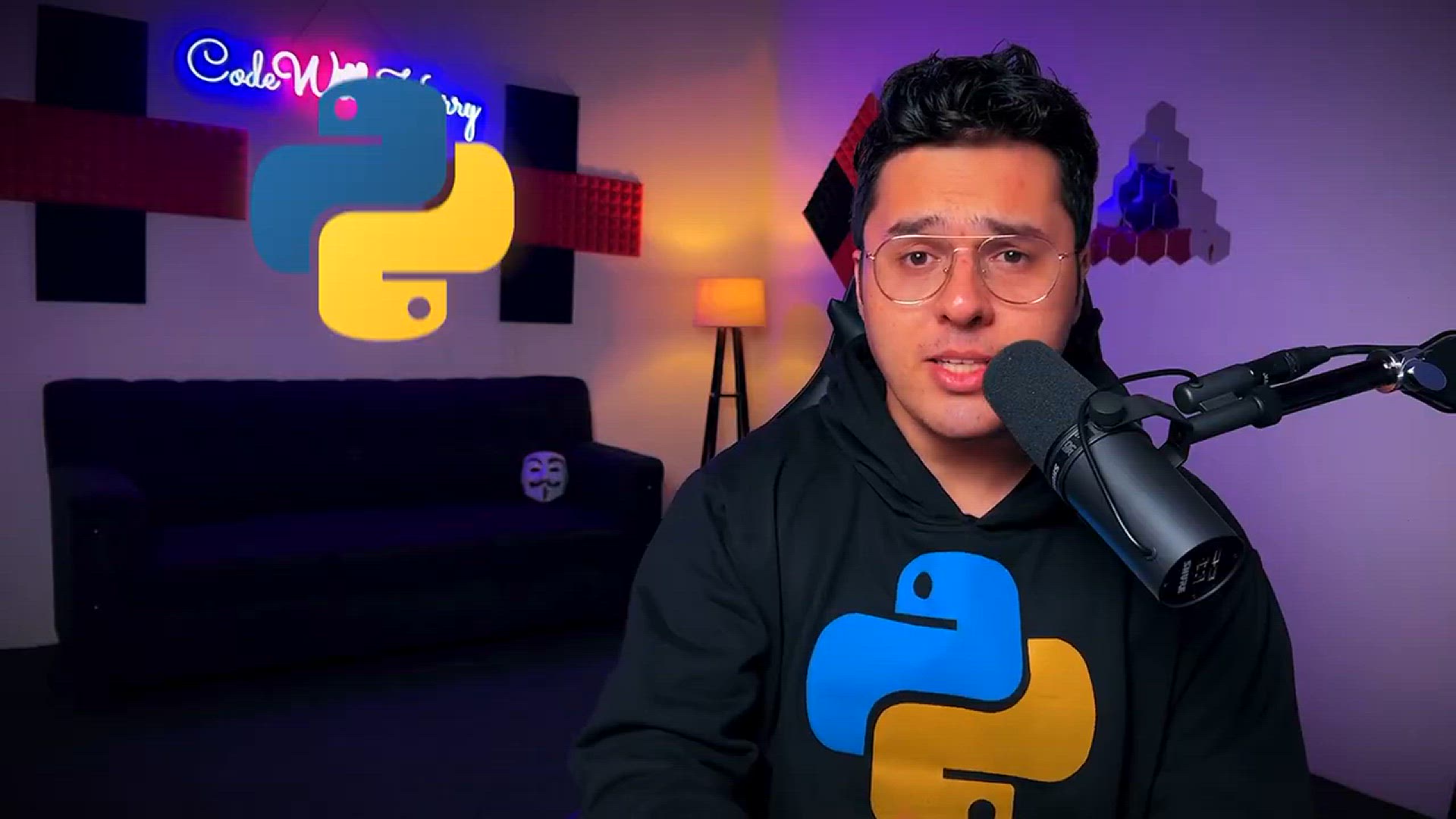
Creating command line utility in python _ Python Tutorial - ...
17 views · Feb 10, 2024 codehunter.online
In the video "Creating Command Line Utility in Python - Python Tutorial - Day #85", viewers learn how to develop command-line utilities using Python, enabling users to interact with programs through a terminal interface. The tutorial covers the argparse module, a standard library in Python, which facilitates the parsing of command-line arguments and options. Viewers discover how to define command-line interfaces for Python scripts, including specifying positional arguments, optional arguments, flags, and subcommands. Practical examples demonstrate how to create robust and user-friendly command-line interfaces for Python scripts, enhancing their usability and versatility. By mastering the creation of command-line utilities, viewers can develop powerful and accessible tools for automating tasks, performing system administration, or executing Python scripts from the command line. This tutorial is essential for Python developers seeking to extend the usability and accessibility of their Python programs through command-line interfaces.

Walrus Operator in Python _ Python Tutorial - Day #86
217 views · Feb 10, 2024 codehunter.online
In the video "Walrus Operator in Python - Python Tutorial - Day #86", viewers are introduced to the walrus operator (`:=`), a feature introduced in Python 3.8. The tutorial explains how the walrus operator allows assignment expressions within expressions, enabling more concise and readable code. Viewers learn how to use the walrus operator to assign values to variables as part of larger expressions, reducing the need for repetitive assignments and improving code efficiency. Practical examples illustrate how the walrus operator can be used in various scenarios, such as while loops, list comprehensions, and conditional expressions, to streamline code and enhance readability. By mastering the walrus operator, viewers can write more expressive and efficient Python code, leveraging its capabilities to improve their programming productivity. This tutorial is essential for Python developers seeking to stay up-to-date with the latest features and enhancements in Python and optimize their coding practices.

Shutil Module in Python _ Python Tutorial - Day #87
2K views · Feb 10, 2024 codehunter.online
In the video "Shutil Module in Python - Python Tutorial - Day #87", viewers explore the shutil module, a powerful utility module in Python used for high-level file operations. The tutorial covers various functionalities of the shutil module, including copying files and directories, moving files, archiving files, and more. Viewers learn how to leverage functions such as shutil.copy(), shutil.move(), shutil.rmtree(), and shutil.make_archive() to perform common file operations efficiently and safely. Practical examples demonstrate how to use the shutil module to automate file management tasks, manipulate directory structures, and handle file backups. By mastering the shutil module, viewers can simplify complex file operations, improve code readability, and enhance the reliability of their Python programs. This tutorial is essential for Python developers seeking to streamline file handling operations and optimize their file management workflows using Python.

Exercise 9_ Solution - Shoutouts to Everyone _ Python Tutori...
32 views · Feb 10, 2024 codehunter.online
In the video "Exercise 9 Solution - Shoutouts to Everyone - Python Tutorial - Day #88", viewers are presented with the solution to Exercise 9, a coding challenge introduced in a previous tutorial. The tutorial walks viewers through the completed solution, explaining the implementation details and the logic behind the script. Additionally, the video includes shoutouts, where the content creator acknowledges and appreciates the contributions, comments, or support received from viewers, fostering a sense of community engagement and gratitude. By reviewing the solution and shoutouts, viewers can validate their own implementations, learn from the provided solution, and further develop their programming abilities while feeling recognized within the programming community. This video is essential for Python developers seeking to practice their problem-solving skills, gain practical experience in software development, and engage with a supportive programming community.

Requests Module in Python _ Python Tutorial - Day #89
22 views · Feb 10, 2024 codehunter.online
In the video "Requests Module in Python - Python Tutorial - Day #89", viewers are introduced to the Requests module, a powerful library in Python used for making HTTP requests to web servers. The tutorial covers various functionalities of the Requests module, including sending GET and POST requests, handling response data, and working with request headers and parameters. Viewers learn how to use functions such as requests.get(), requests.post(), requests.put(), and requests.delete() to interact with web services and APIs programmatically. Practical examples demonstrate how to retrieve data from web pages, interact with RESTful APIs, and perform web scraping tasks using the Requests module. By mastering the Requests module, viewers can develop applications that communicate with web servers, fetch data from external sources, and integrate with web-based services seamlessly. This tutorial is essential for Python developers seeking to leverage the power of HTTP requests and streamline web interactions in their Python projects.
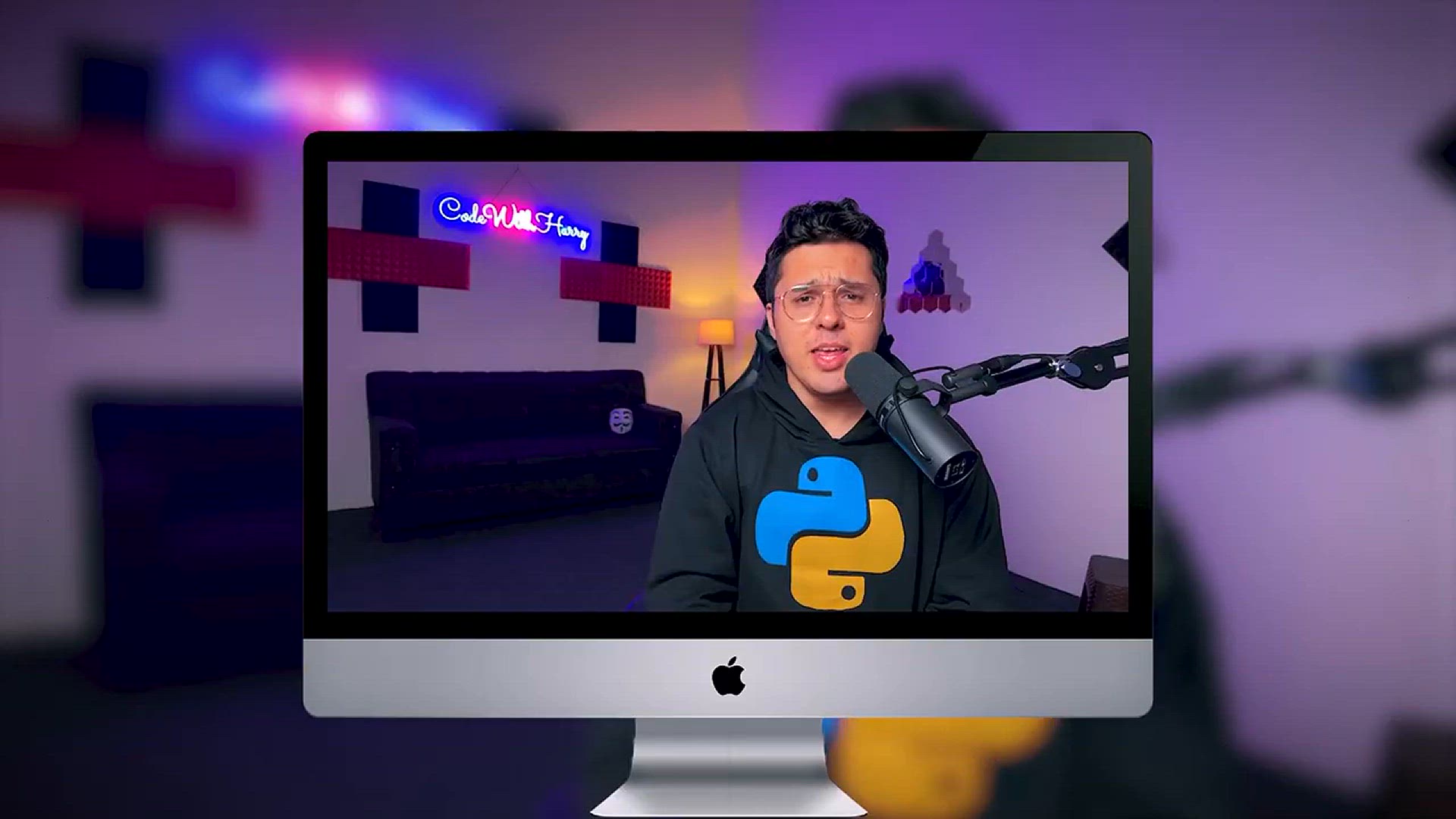
Exercise 10_ News App in Python _ Python Tutorial - Day #90
174 views · Feb 10, 2024 codehunter.online
In the video "Exercise 10 - News App in Python - Python Tutorial - Day #90", viewers are presented with Exercise 10, which involves creating a News App using Python. The tutorial guides viewers through the process of designing and implementing a Python program that retrieves news headlines from an API and displays them to the user. Viewers learn how to utilize the Requests module to make HTTP requests to a news API, parse the JSON response, and extract relevant information to display to the user. Practical examples may demonstrate how to handle user input, format and present the news headlines, and create a simple user interface for the News App. By completing this exercise, viewers can practice their Python programming skills while gaining practical experience in working with APIs and handling JSON data. This tutorial is essential for Python developers seeking to enhance their skills in web development and API integration using Python.

Generators in Python _ Python Tutorial - Day #91
26 views · Feb 10, 2024 codehunter.online
In the video "Generators in Python - Python Tutorial - Day #91", viewers are introduced to generators, a powerful feature in Python for creating iterators efficiently. The tutorial covers how generators work and how they differ from regular functions. Viewers learn how to define generators using the `yield` keyword and how to iterate over the values produced by generators using loops or comprehension expressions. Practical examples demonstrate how generators can be used to generate large sequences of values lazily, avoiding the need to store all values in memory at once. Additionally, the tutorial discusses the advantages of using generators for memory-efficient processing and how they can be integrated into various Python programming tasks, such as data processing, file reading, and algorithmic tasks. By mastering generators, viewers can improve the performance and efficiency of their Python programs while managing memory consumption effectively. This tutorial is essential for Python developers seeking to optimize their code and gain a deeper understanding of Python's iterable and iterator protocols.

Function Caching in Python _ Python Tutorial - Day #92
139 views · Feb 10, 2024 codehunter.online
In the video "Function Caching in Python - Python Tutorial - Day #92", viewers learn about function caching, a technique used to improve the performance of functions by caching the results of expensive computations. The tutorial covers how function caching works and how it can be implemented using the `functools.lru_cache` decorator, available in Python's standard library. Viewers discover how to apply function caching to memoize the results of functions, preventing redundant computations and speeding up subsequent function calls with the same input arguments. Practical examples demonstrate how to use function caching to optimize the performance of recursive functions, computationally intensive tasks, or functions that rely on expensive external resources. By mastering function caching, viewers can significantly improve the efficiency of their Python programs, especially when dealing with repetitive computations or tasks with expensive resource requirements. This tutorial is essential for Python developers seeking to optimize the performance of their applications and reduce execution time for frequently used functions.

Exercise 10 - News App Solution & Shoutout _ Python Tuto...
64 views · Feb 10, 2024 codehunter.online
In the video "Exercise 10 - News App Solution & Shoutout - Python Tutorial - Day #93", viewers are presented with the solution to Exercise 10, which involved creating a News App using Python. The tutorial walks viewers through the completed solution, explaining the implementation details and the logic behind the script. Additionally, the video includes shoutouts, where the content creator acknowledges and appreciates the contributions, comments, or support received from viewers, fostering a sense of community engagement and gratitude. By reviewing the solution and shoutouts, viewers can validate their own implementations, learn from the provided solution, and further develop their programming abilities while feeling recognized within the programming community. This video is essential for Python developers seeking to practice their problem-solving skills, gain practical experience in software development, and engage with a supportive programming community.

Exercise 11 - Drink Water Reminder _ Python Tutorial - Day #...
4K views · Feb 10, 2024 codehunter.online
In the video "Exercise 11 - Drink Water Reminder - Python Tutorial - Day #94", viewers are presented with Exercise 11, which involves creating a Python program to remind users to drink water at regular intervals. The tutorial guides viewers through the process of designing and implementing a simple reminder application using Python. Viewers learn how to utilize Python's datetime module to track the current time and schedule reminders for drinking water. Practical examples may demonstrate how to use the time.sleep() function to pause execution and prompt the user to drink water at specified intervals. By completing this exercise, viewers can practice their Python programming skills while gaining practical experience in implementing simple reminder applications. This tutorial is essential for Python developers seeking to enhance their skills in working with date and time functionalities and developing basic utility applications in Python.

Regular Expressions in Python _ Python Tutorial - Day #95
20K views · Feb 10, 2024 codehunter.online
In the video "Regular Expressions in Python - Python Tutorial - Day #95", viewers are introduced to regular expressions, a powerful tool for searching, matching, and manipulating text patterns in Python. The tutorial covers the basics of regular expressions, including syntax, metacharacters, and pattern matching techniques. Viewers learn how to use the re module in Python to work with regular expressions, including functions such as re.search(), re.match(), re.findall(), and re.sub(). Practical examples demonstrate how to create and apply regular expressions to perform tasks such as pattern matching, string substitution, and text validation. By mastering regular expressions, viewers can efficiently extract information from text data, validate user input, and perform complex text processing tasks in Python. This tutorial is essential for Python developers seeking to enhance their text processing capabilities and streamline tasks involving pattern matching and manipulation of textual data.

AsyncIO in Python _ Python Tutorial - Day #96
18 views · Feb 10, 2024 codehunter.online
In the video "AsyncIO in Python - Python Tutorial - Day #96", viewers are introduced to AsyncIO, a powerful framework in Python for asynchronous programming. The tutorial covers the basics of asynchronous programming, including event loops, coroutines, and asynchronous I/O operations. Viewers learn how to use the AsyncIO module in Python to write asynchronous code, including defining asynchronous functions with the async keyword and using the await keyword to pause execution until asynchronous operations complete. Practical examples demonstrate how to create and run asynchronous tasks, handle concurrent operations, and improve performance by leveraging asynchronous programming techniques. By mastering AsyncIO, viewers can develop highly efficient and scalable Python applications that handle multiple tasks concurrently and make efficient use of system resources. This tutorial is essential for Python developers seeking to build responsive, high-performance applications and understand the principles of asynchronous programming in Python.

Multithreading in Python _ Python Tutorial - Day #97
209 views · Feb 10, 2024 codehunter.online
In the video "Multithreading in Python - Python Tutorial - Day #97", viewers are introduced to multithreading, a technique for achieving concurrency by executing multiple threads of execution within a single process. The tutorial covers the basics of multithreading in Python, including creating and managing threads using the threading module. Viewers learn how to define and start threads, synchronize access to shared resources using locks, and communicate between threads using queues. Practical examples demonstrate how to use multithreading to perform parallel processing tasks, improve responsiveness in GUI applications, and handle concurrent I/O operations. By mastering multithreading, viewers can develop Python applications that leverage the power of parallelism to enhance performance and responsiveness. This tutorial is essential for Python developers seeking to understand concurrency and parallelism in Python and learn how to utilize multithreading effectively in their applications.

MultiProcessing in Python _ Python Tutorial - Day #98
291 views · Feb 10, 2024 codehunter.online
In the video "MultiProcessing in Python - Python Tutorial - Day #98", viewers explore multiprocessing, a technique for achieving parallelism by executing multiple processes simultaneously. The tutorial covers the basics of multiprocessing in Python, introducing the multiprocessing module for creating and managing processes. Viewers learn how to define and start processes, share data between processes using shared memory or communication channels like queues and pipes, and synchronize access to shared resources using locks and semaphores. Practical examples demonstrate how to use multiprocessing to improve the performance of CPU-bound tasks, such as data processing, computation-heavy operations, and simulations, by distributing the workload across multiple CPU cores. By mastering multiprocessing, viewers can develop Python applications that take advantage of parallel processing to speed up execution and maximize system resources utilization. This tutorial is essential for Python developers seeking to leverage parallelism and concurrency in their applications and optimize performance for computationally intensive tasks.

Exercise 11_ Solution + Shoutouts - Desktop Notification Sys...
31 views · Feb 10, 2024 codehunter.online
In the video "Exercise 11 Solution + Shoutouts - Desktop Notification System - Python Tutorial - Day #99", viewers are provided with the solution to Exercise 11, which involved creating a Desktop Notification System using Python. The tutorial walks viewers through the completed solution, explaining the implementation details and the logic behind the script. Additionally, the video includes shoutouts, where the content creator acknowledges and appreciates the contributions, comments, or support received from viewers, fostering a sense of community engagement and gratitude. By reviewing the solution and shoutouts, viewers can validate their own implementations, learn from the provided solution, and further develop their programming abilities while feeling recognized within the programming community. This video is essential for Python developers seeking to practice their problem-solving skills, gain practical experience in software development, and engage with a supportive programming community.

Conclusion and Where to go from here _ Python Tutorial - Day...
148 views · Feb 10, 2024 codehunter.online
In the video "Conclusion and Where to Go from Here - Python Tutorial - Day #100", viewers are provided with a comprehensive conclusion to the Python tutorial series. The content creator summarizes key concepts covered throughout the series, highlights important topics, and encourages viewers to continue their learning journey beyond the tutorial. The video may include recommendations for further study, such as exploring advanced Python features, diving into specific libraries or frameworks, contributing to open-source projects, or pursuing related topics like data science, web development, or machine learning. Additionally, the content creator may offer guidance on how to stay updated with the latest developments in the Python ecosystem and how to further engage with the programming community. By watching this video, viewers gain closure on the tutorial series while feeling empowered and inspired to continue their Python learning journey.